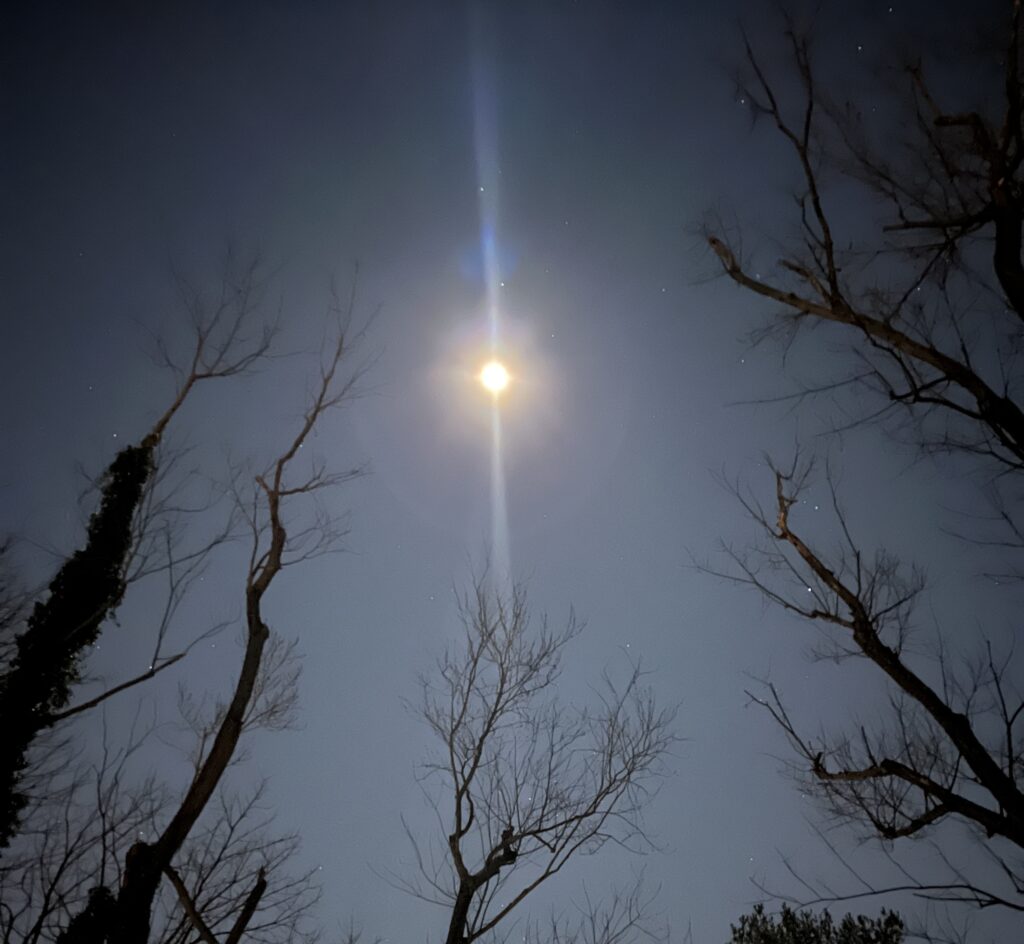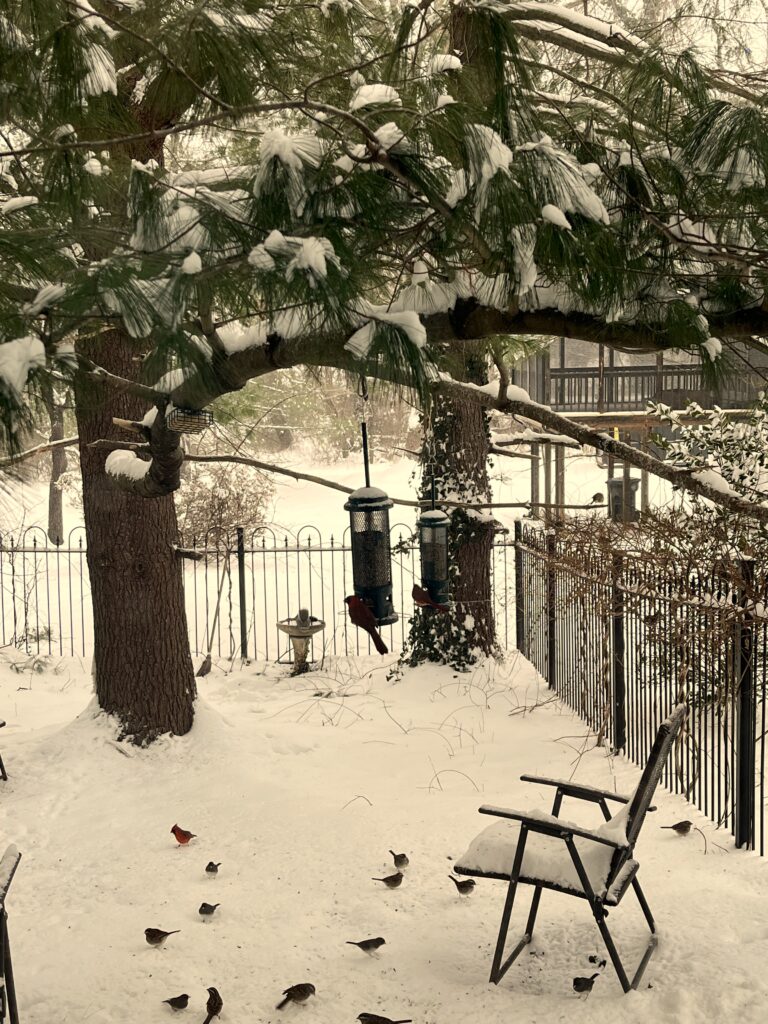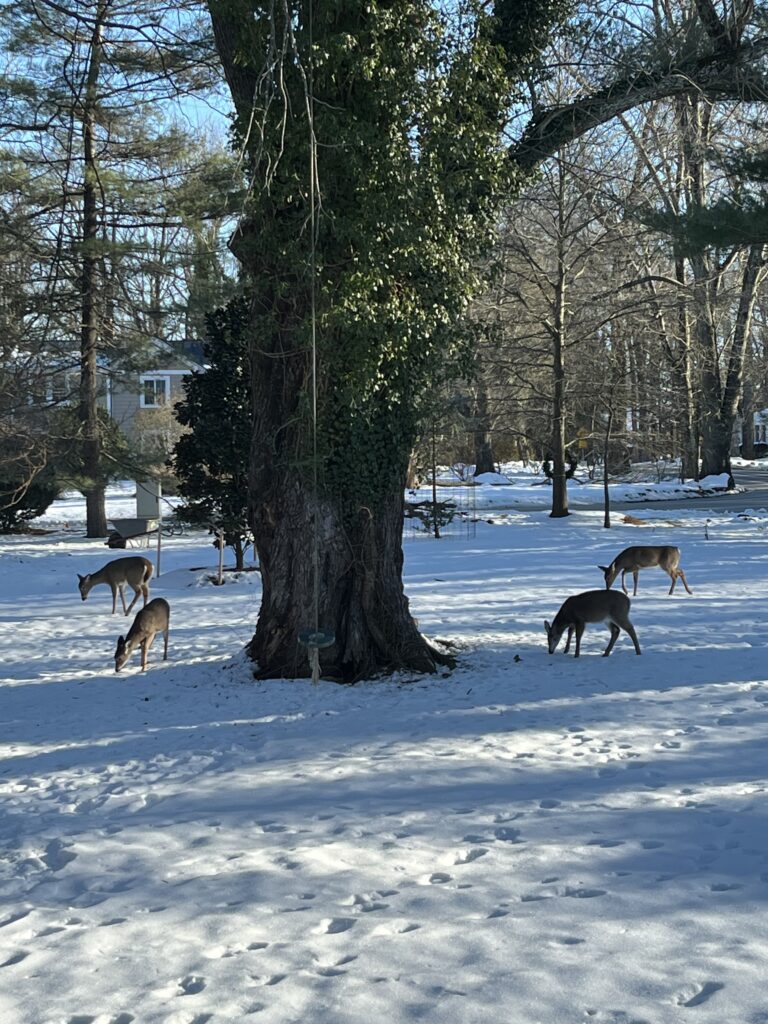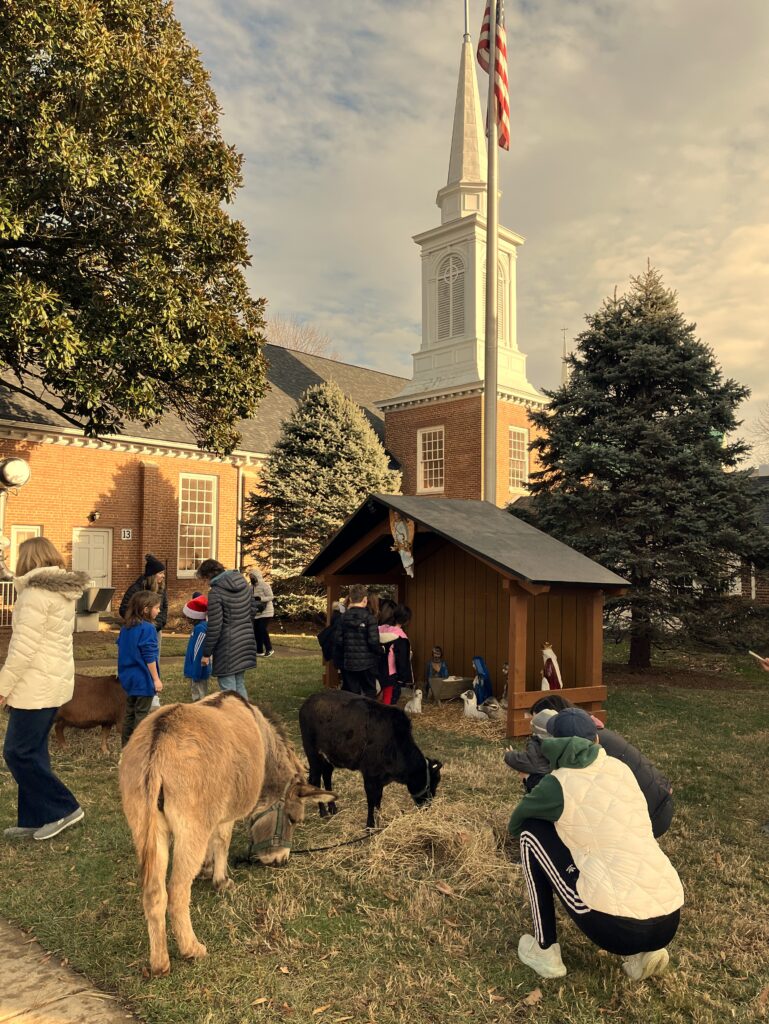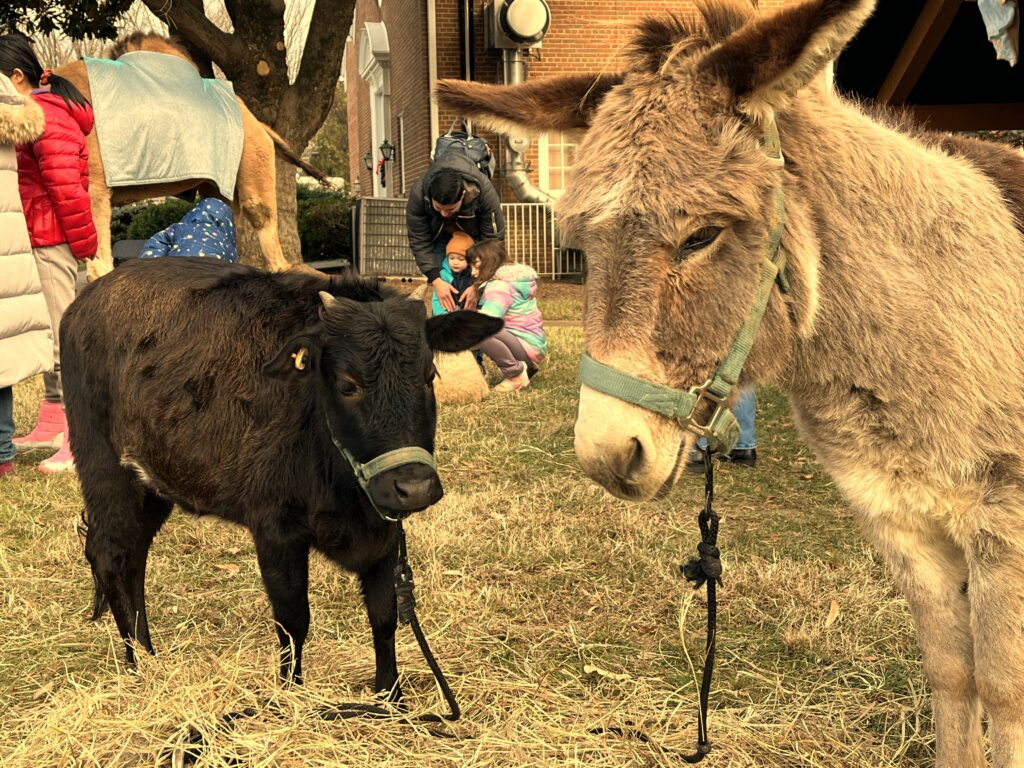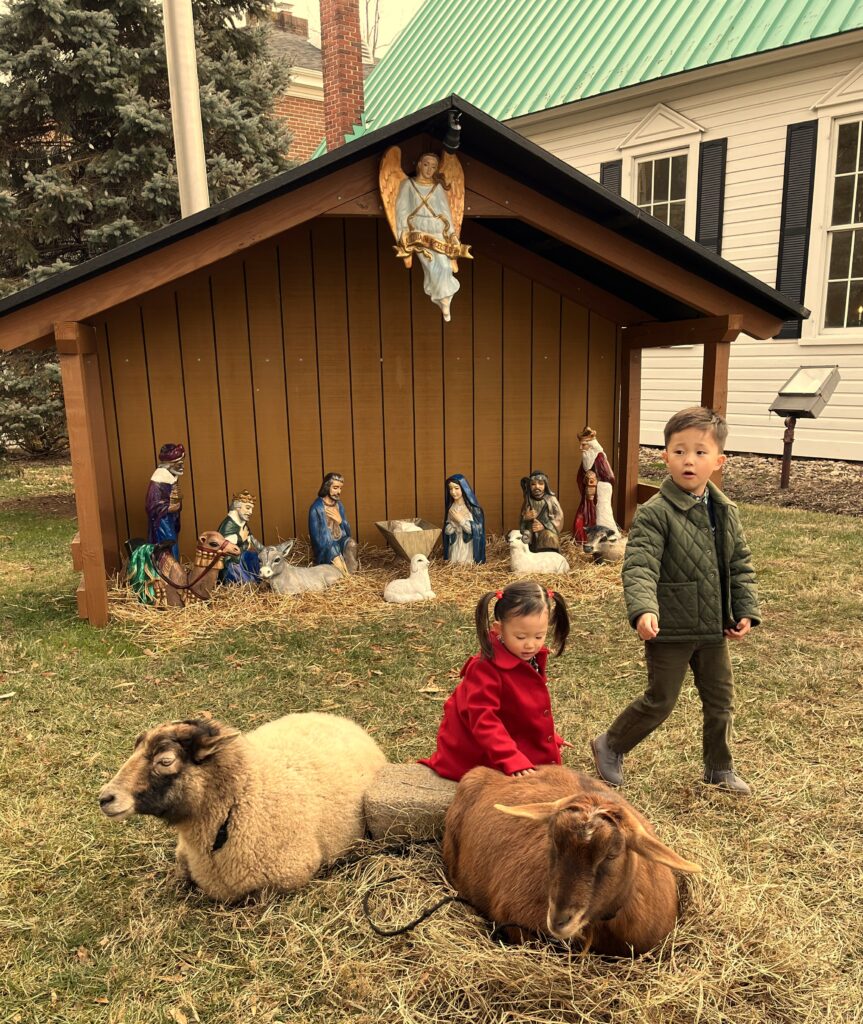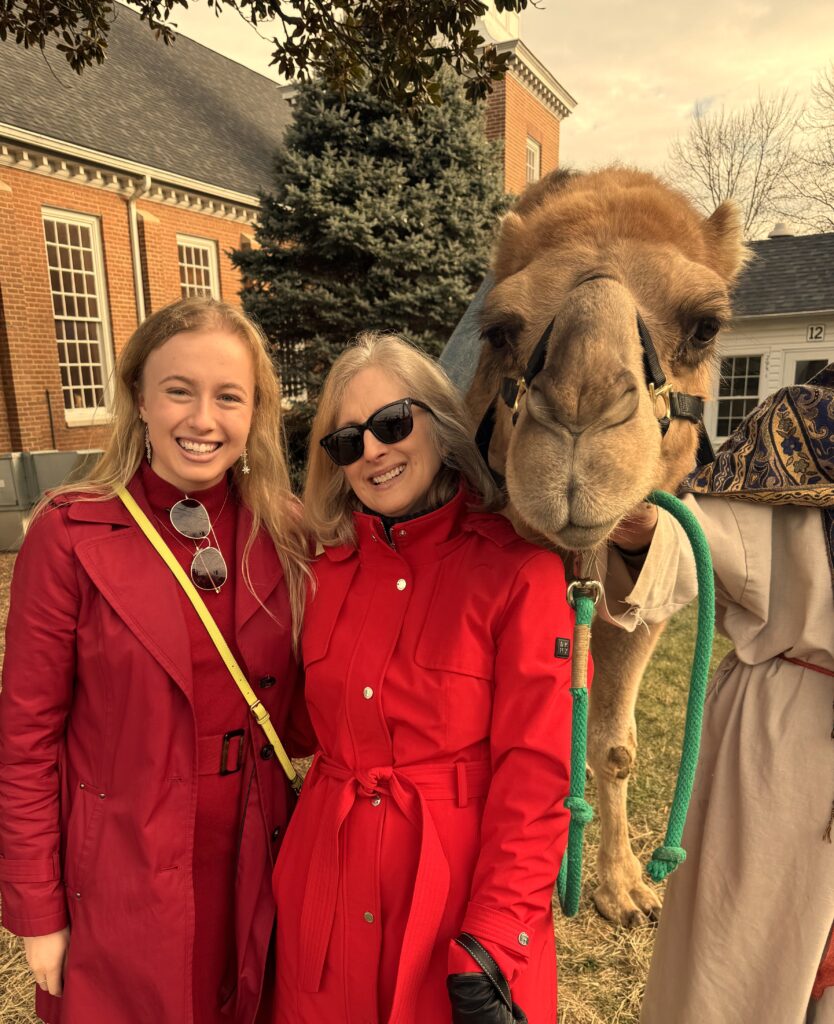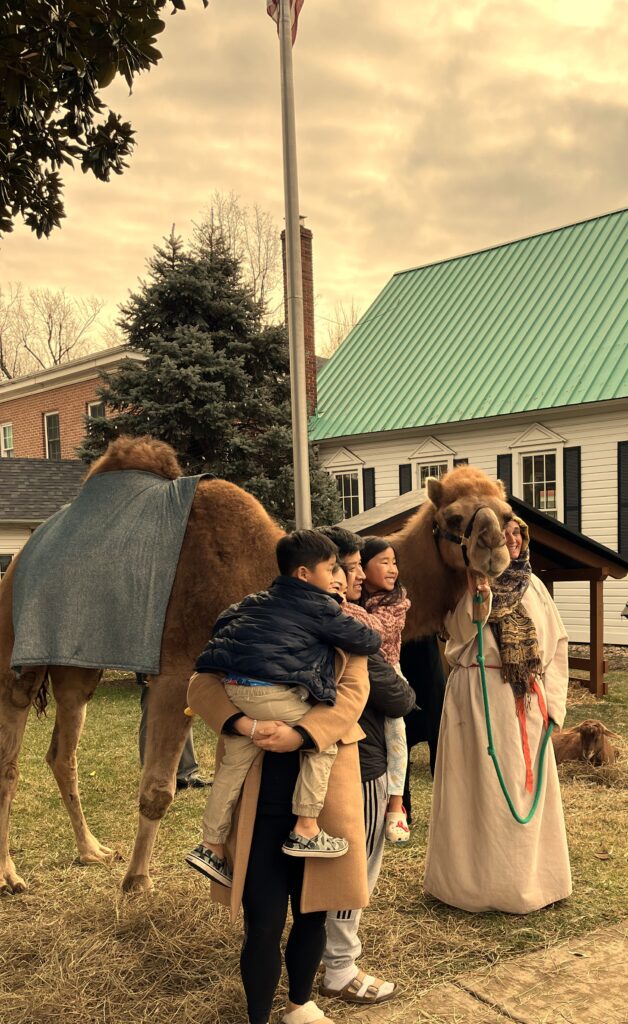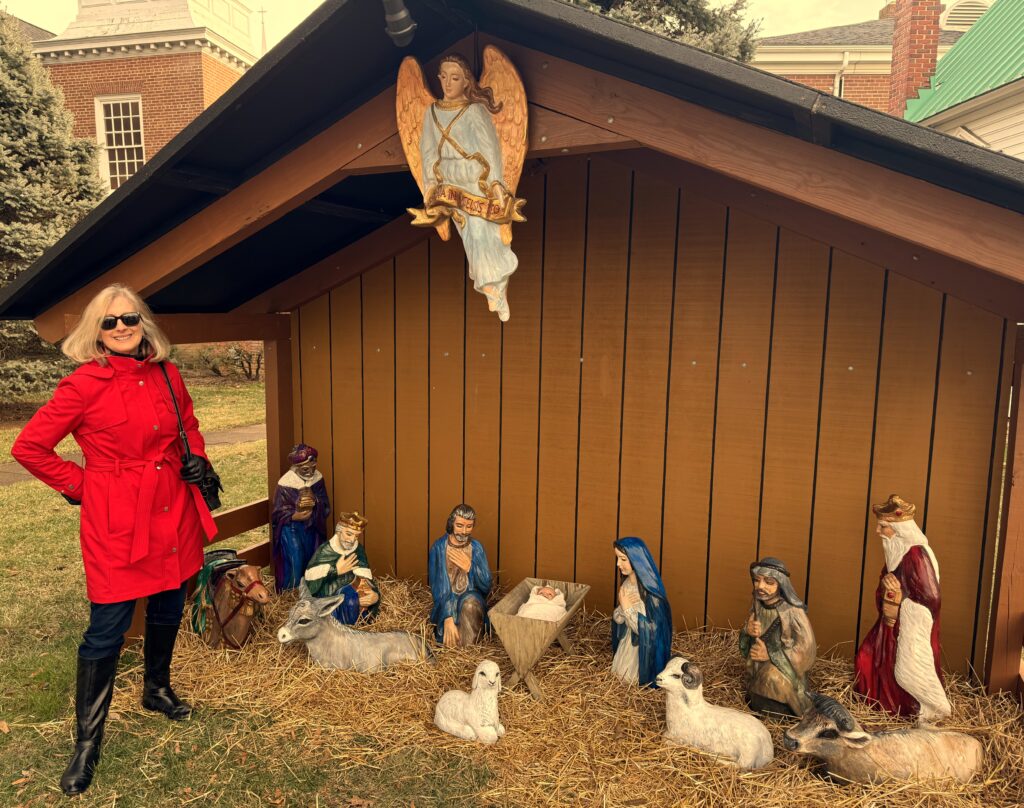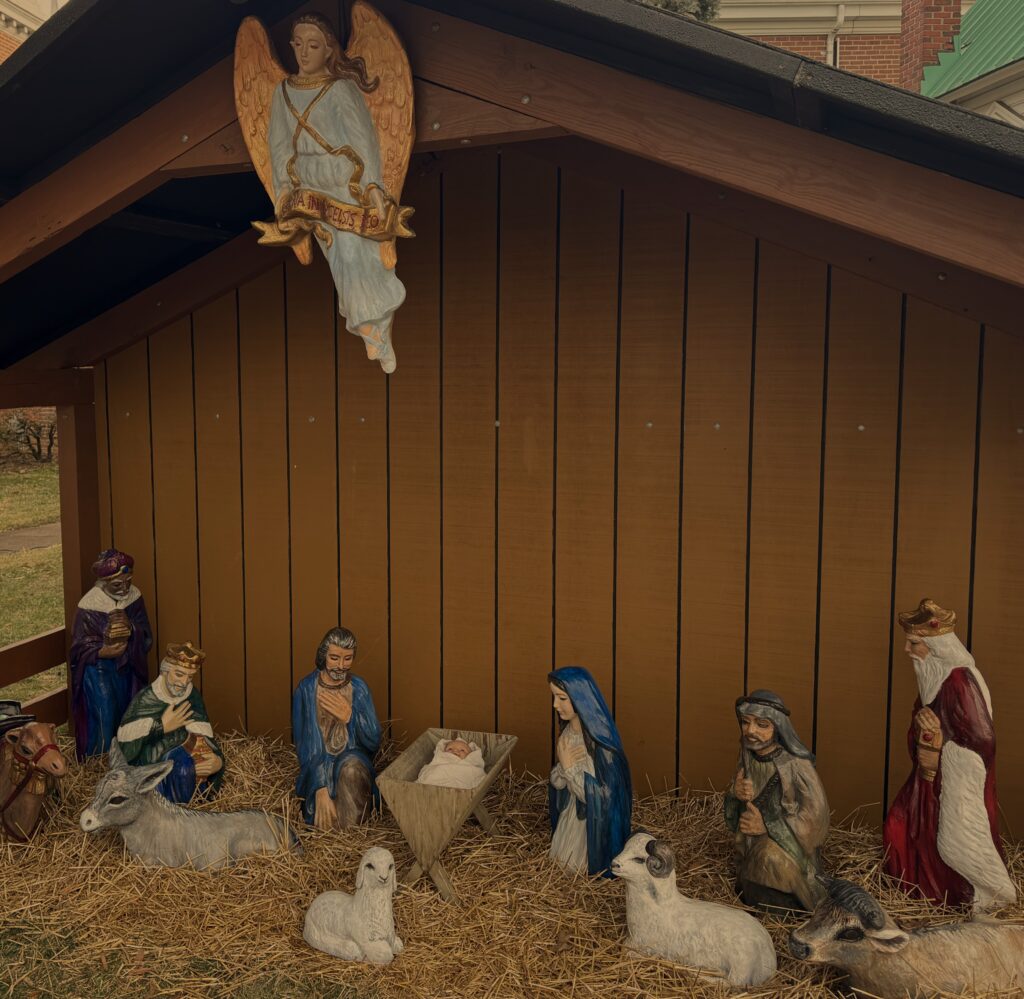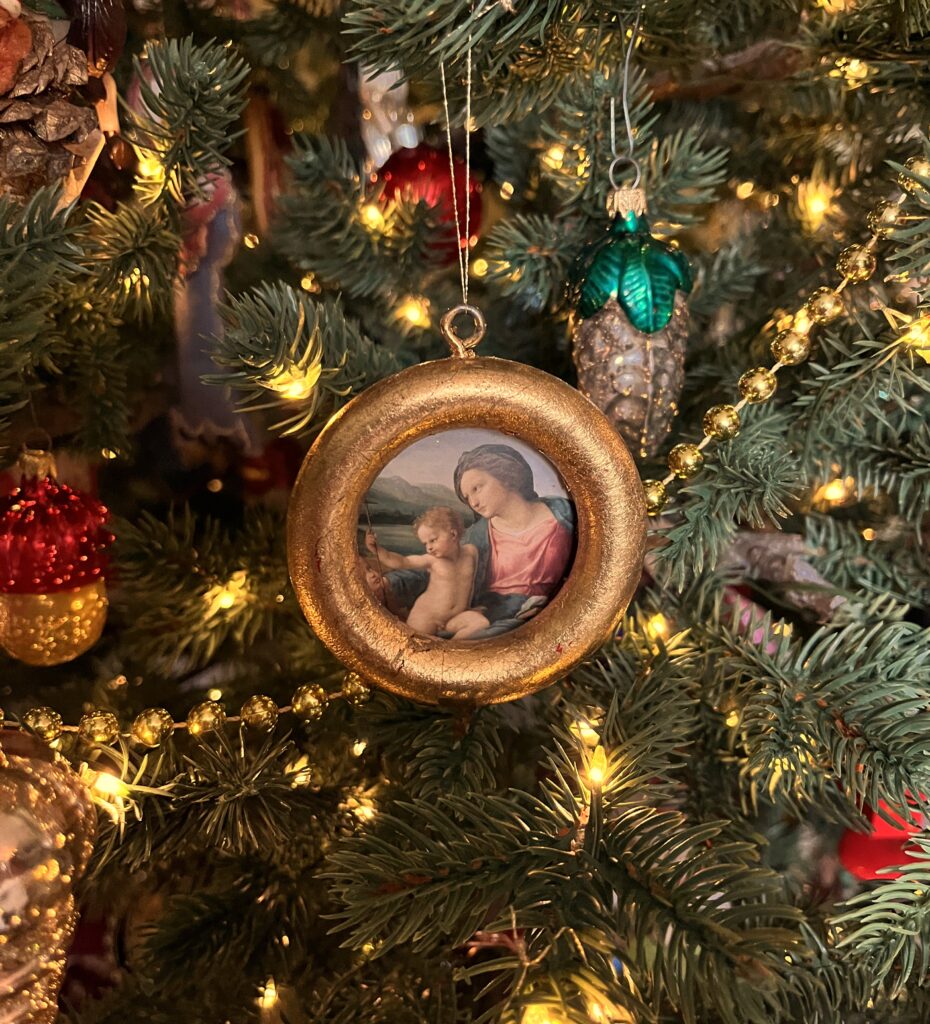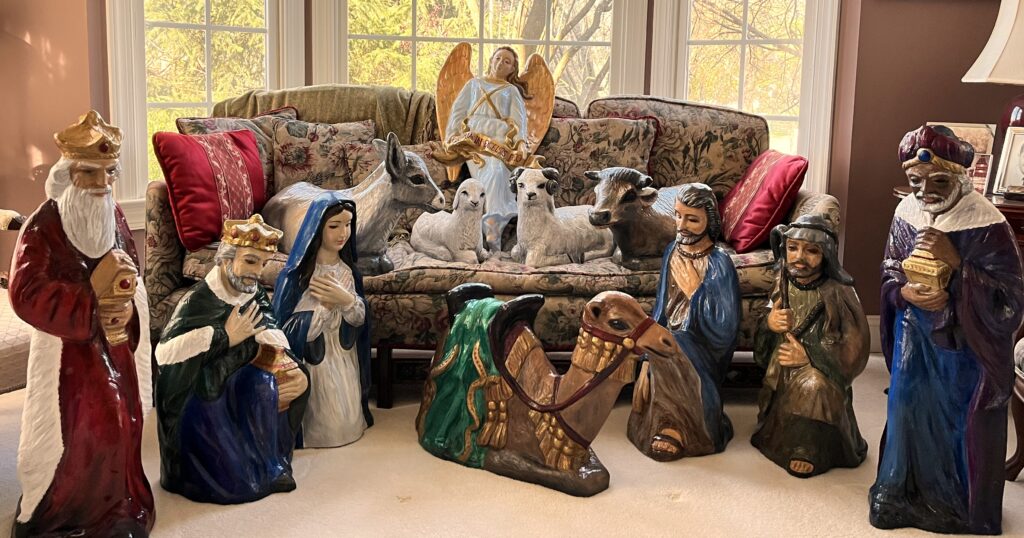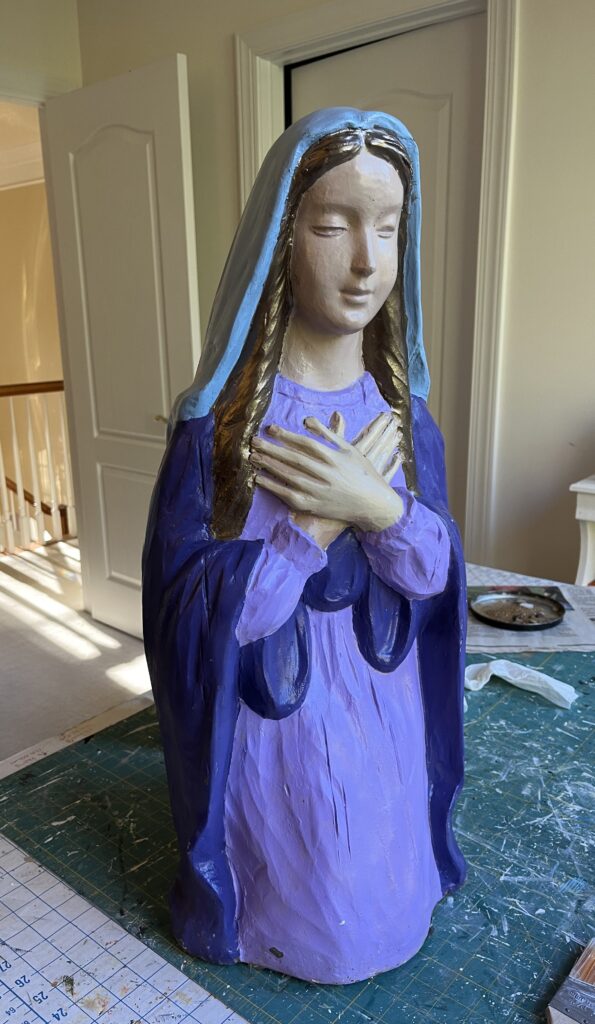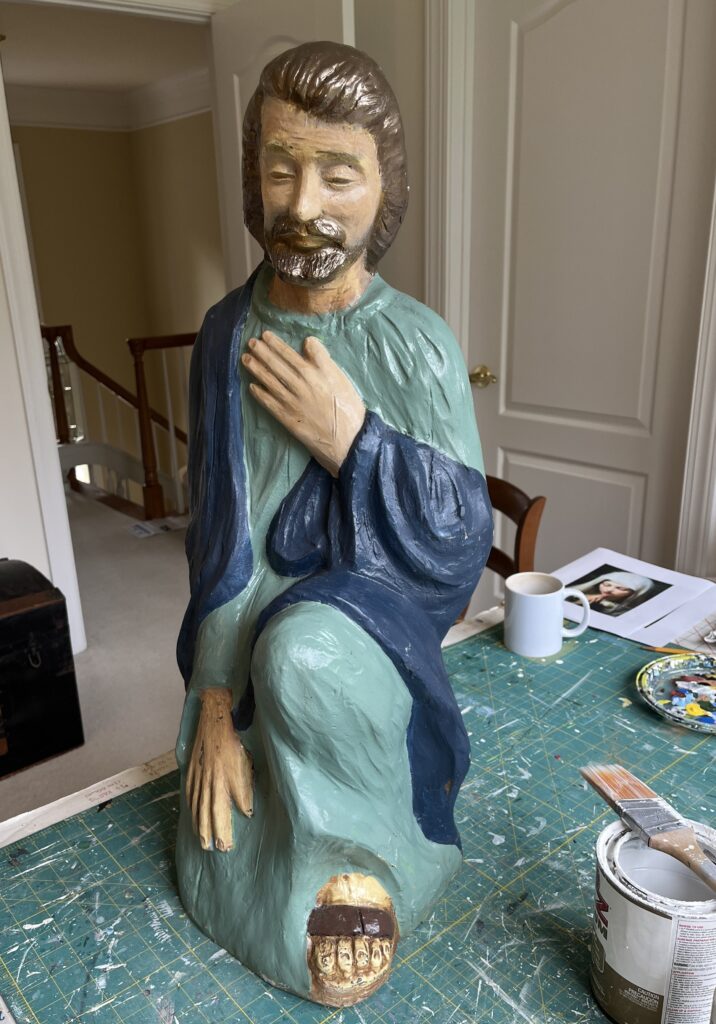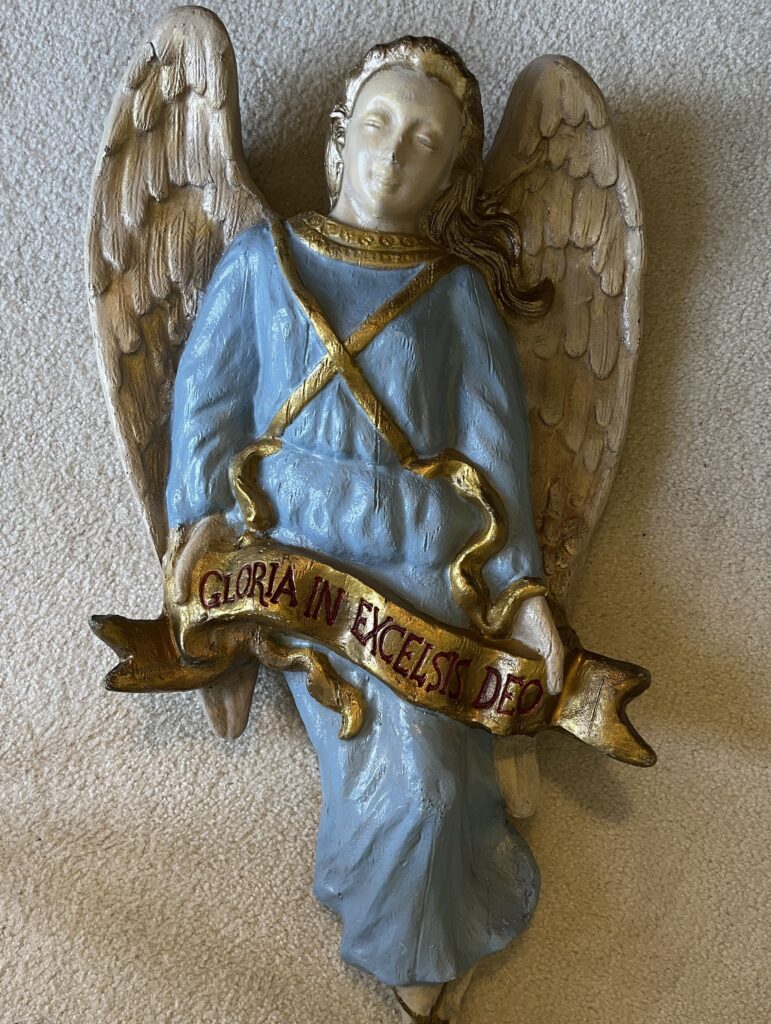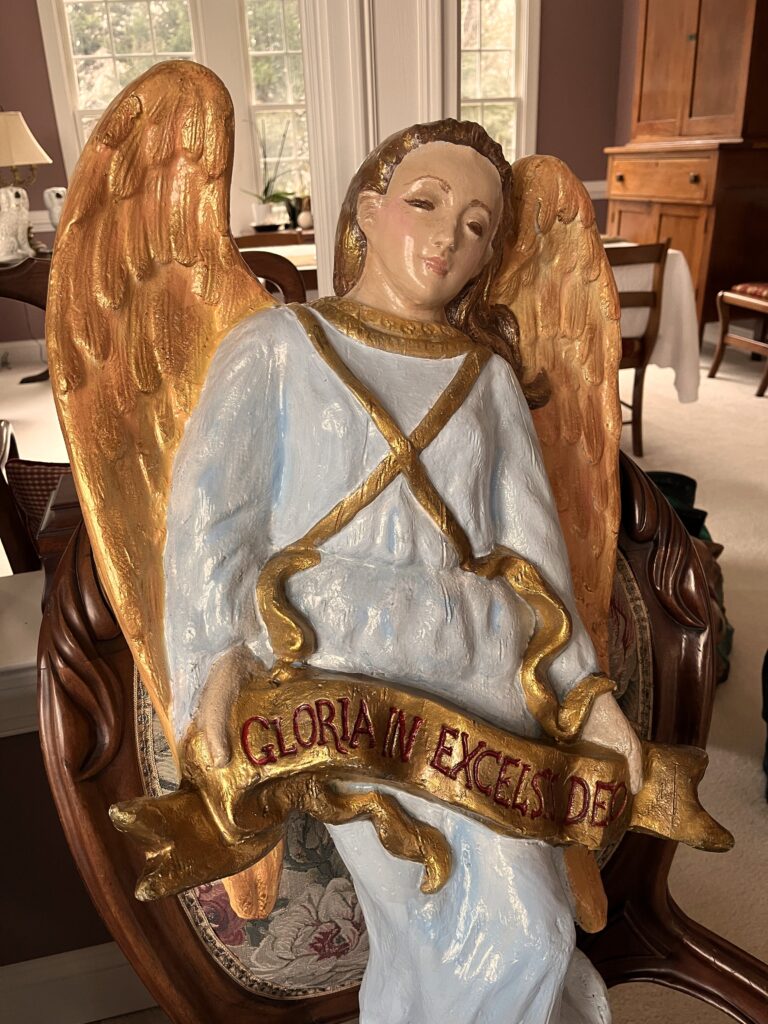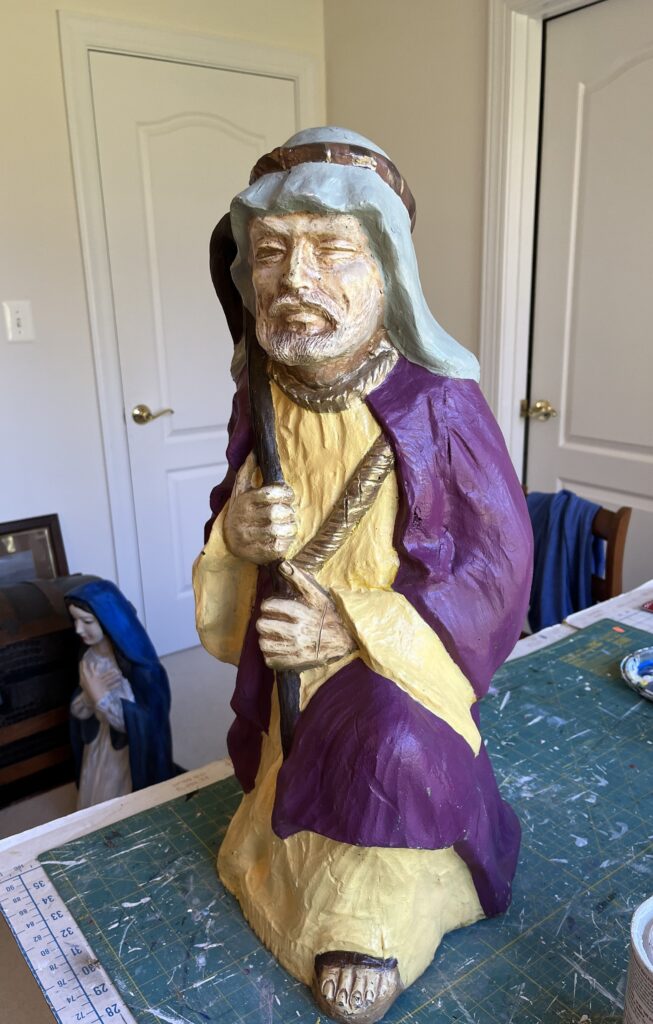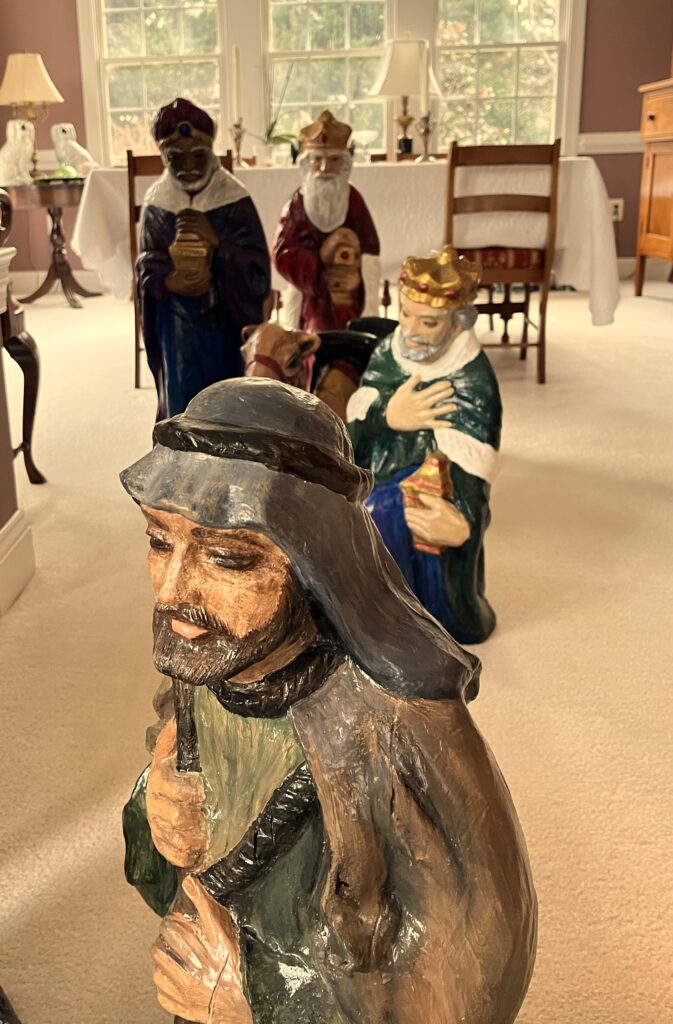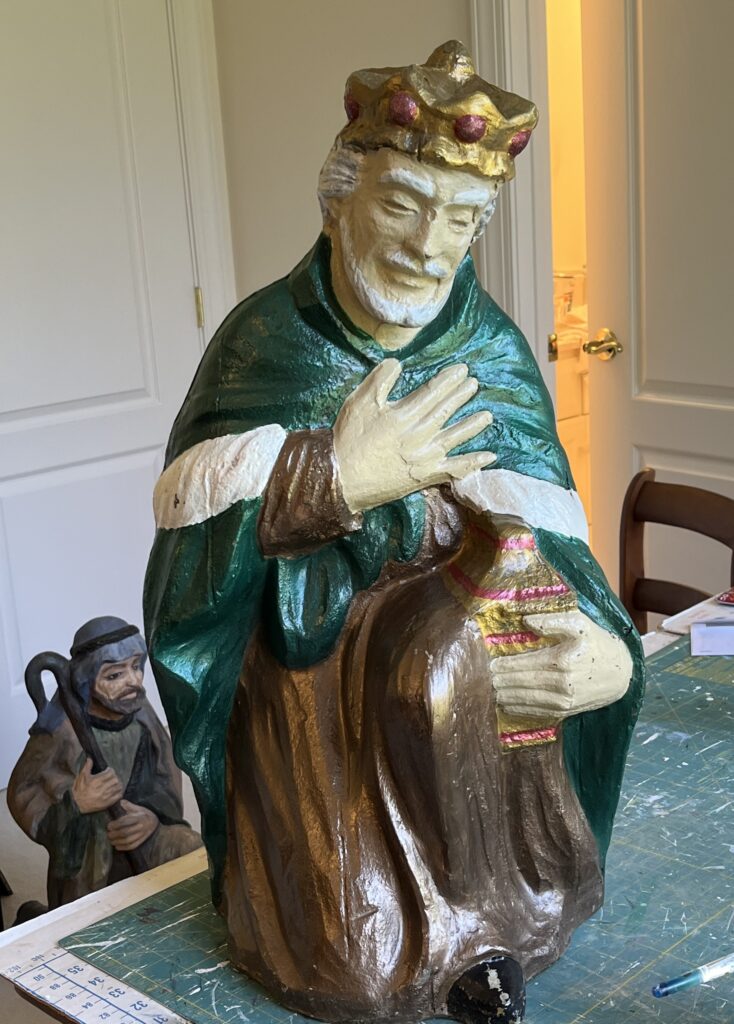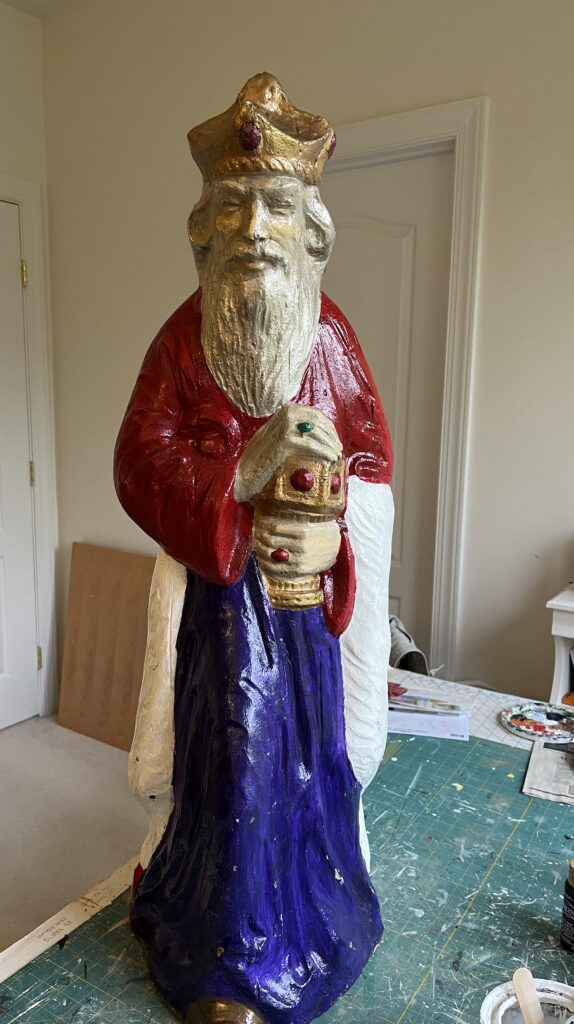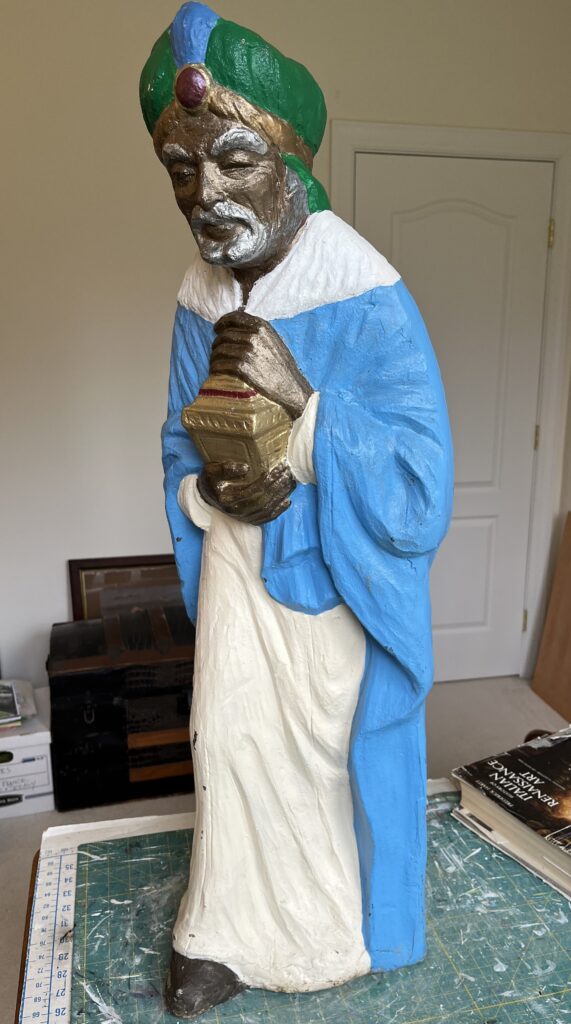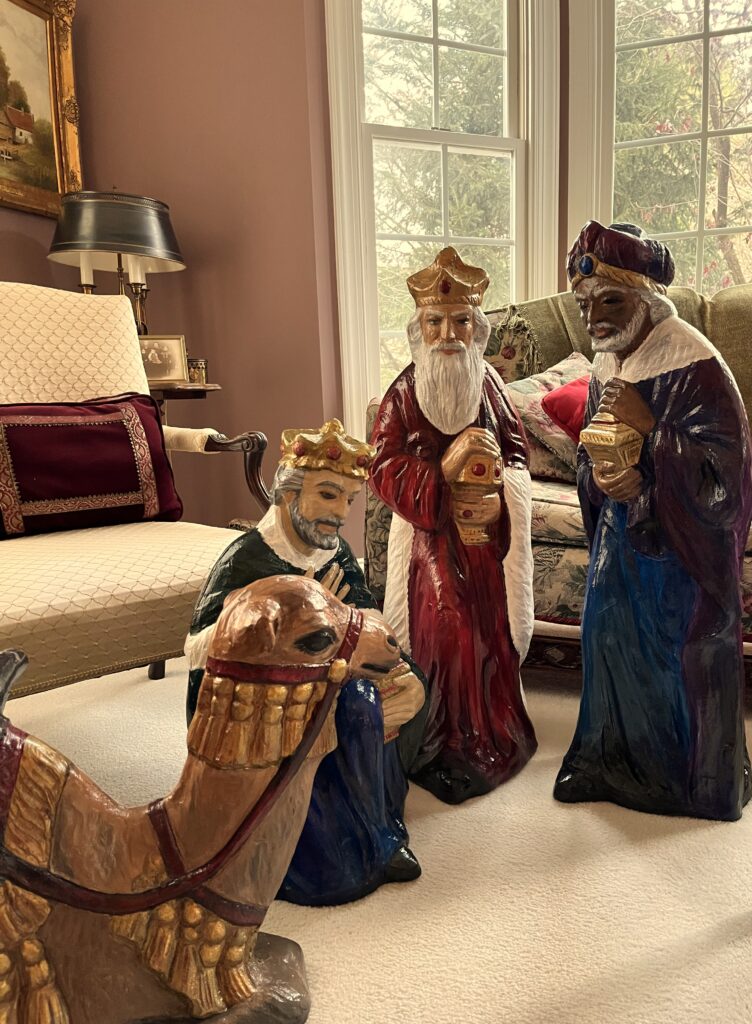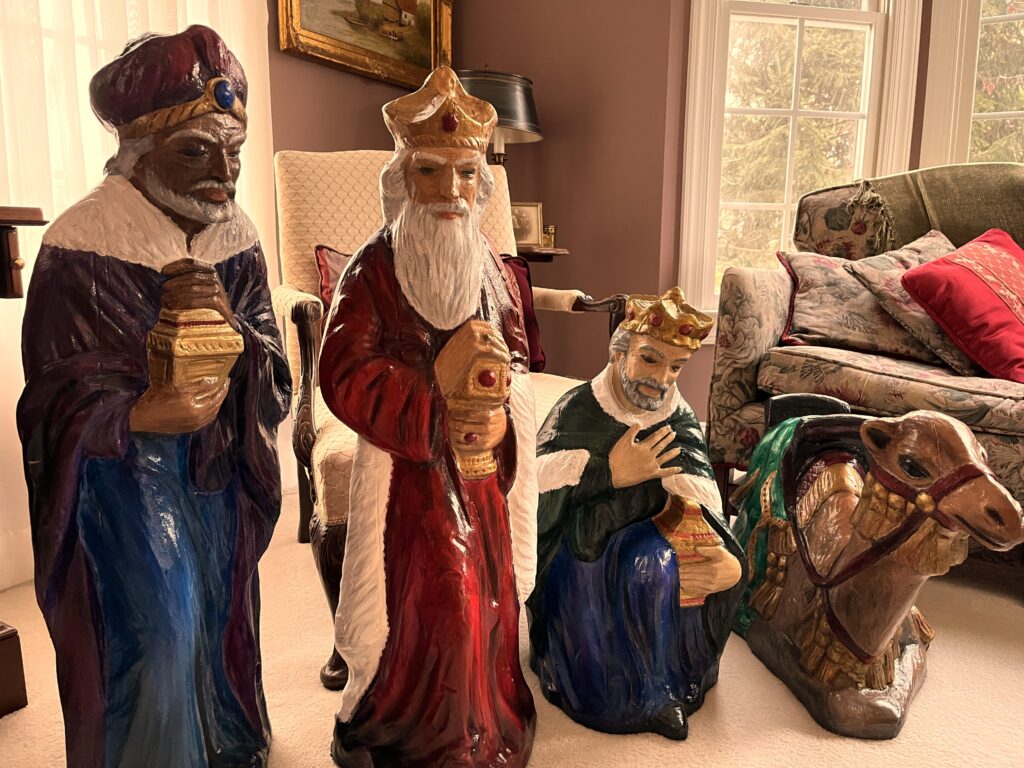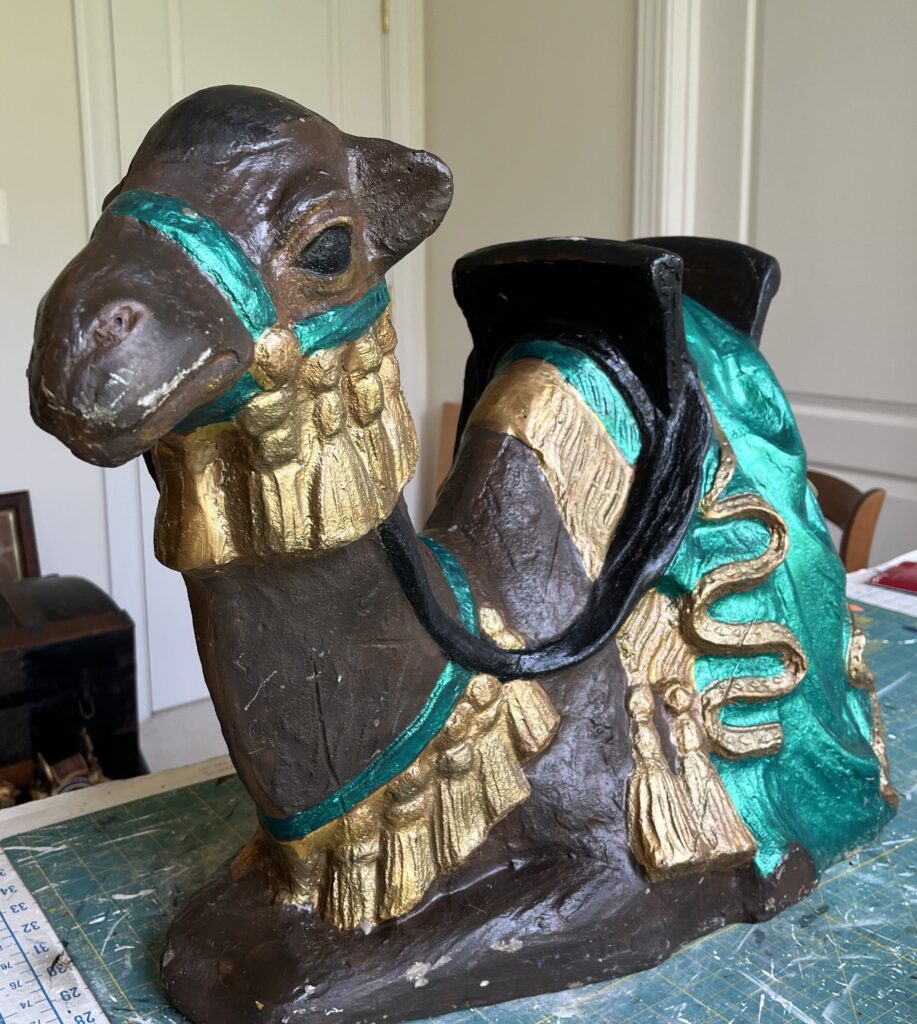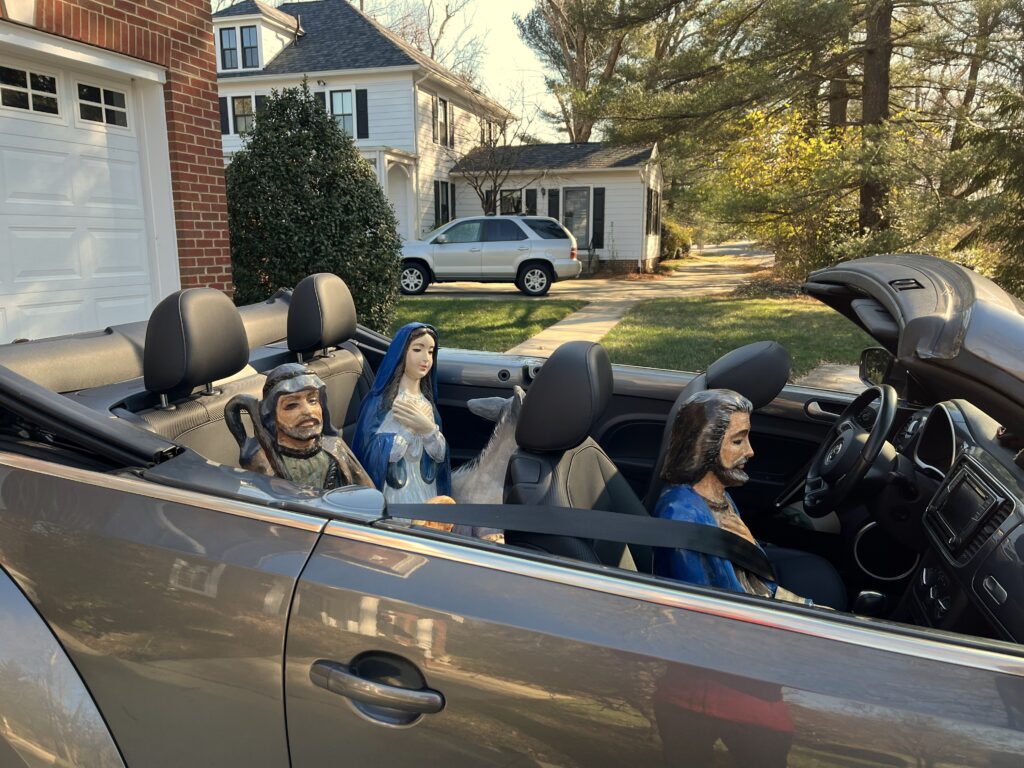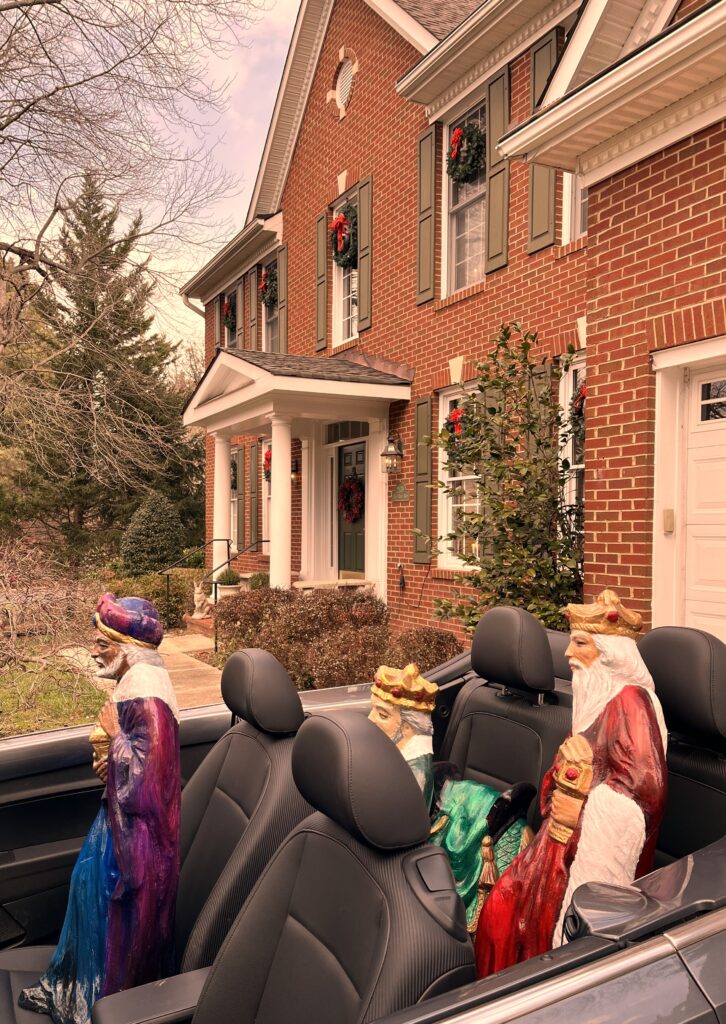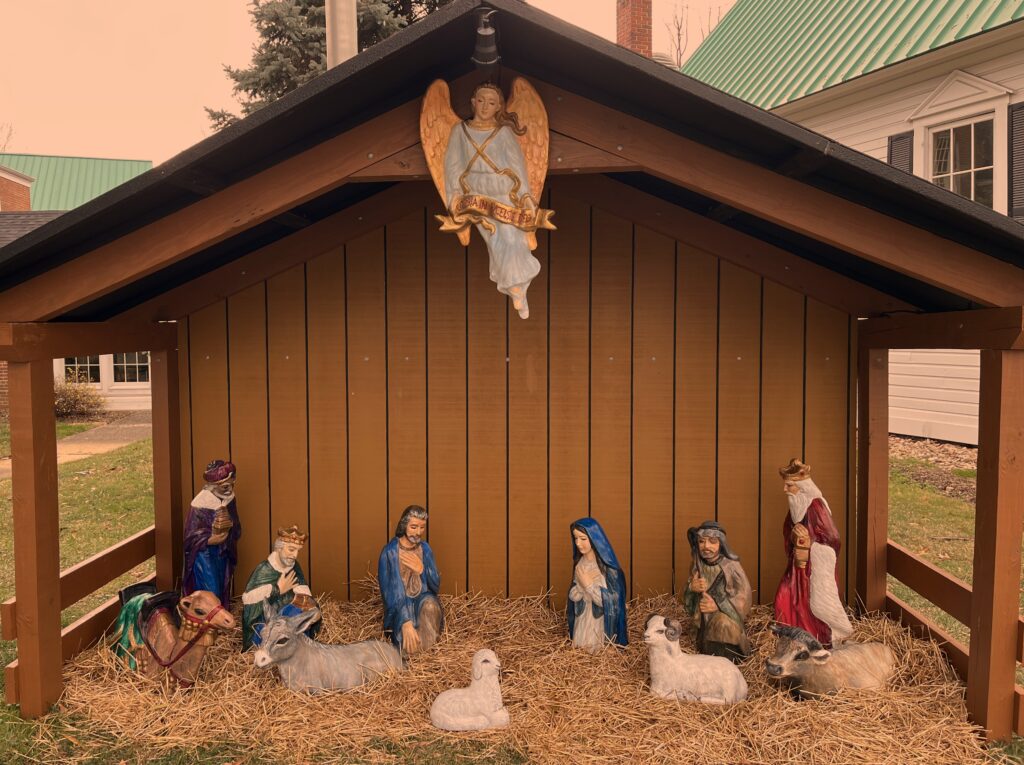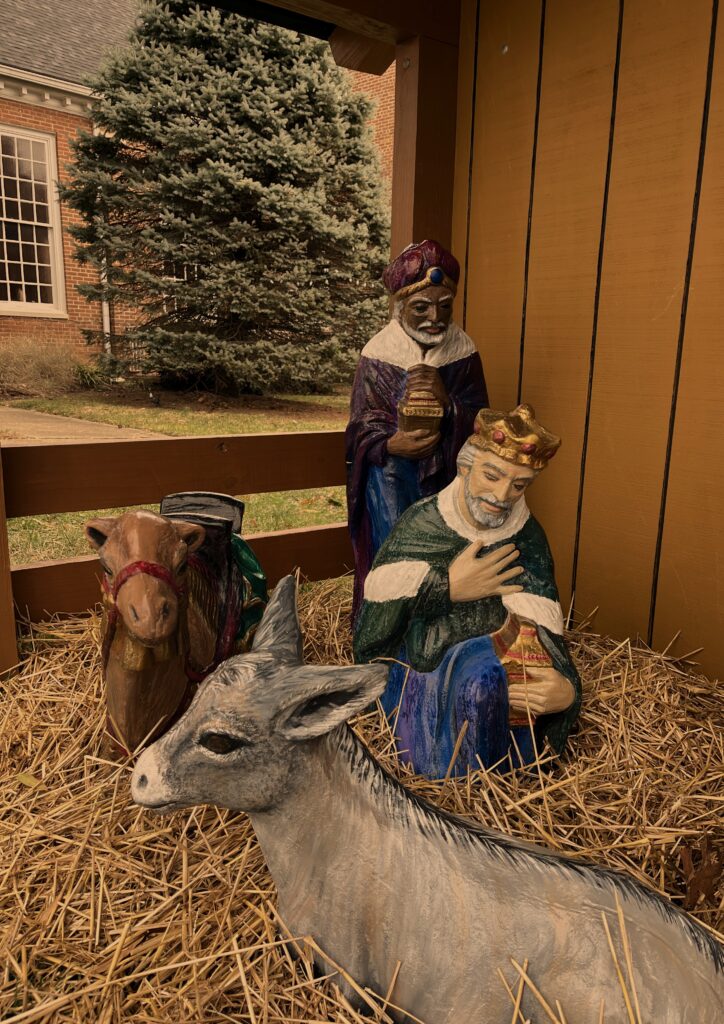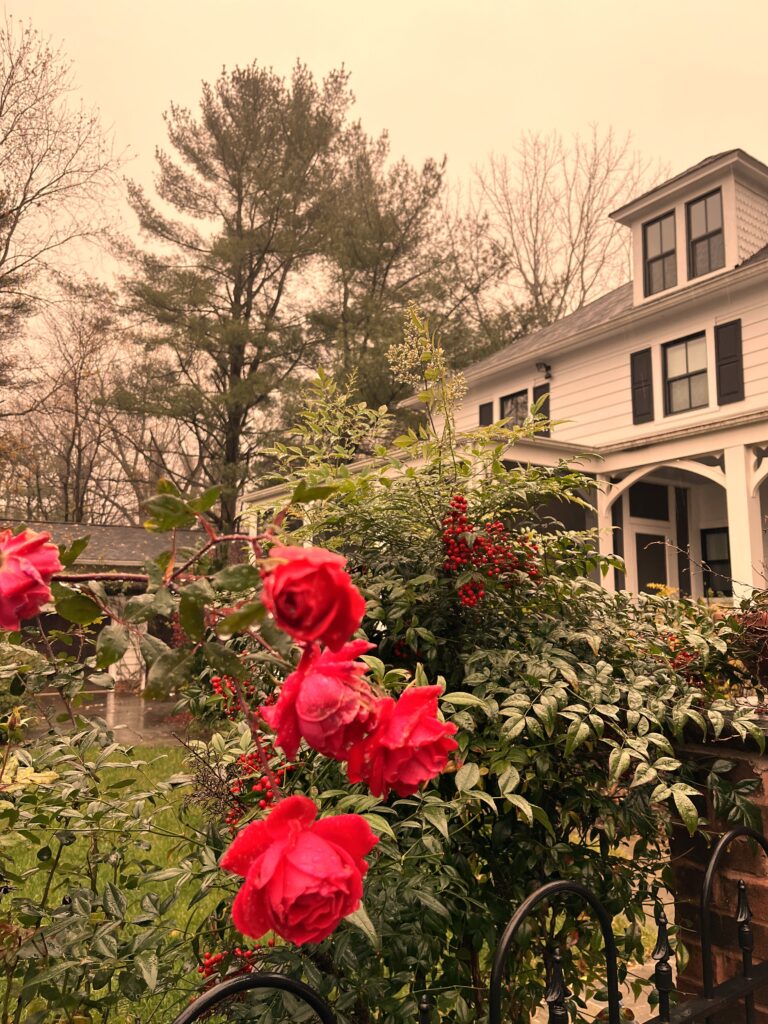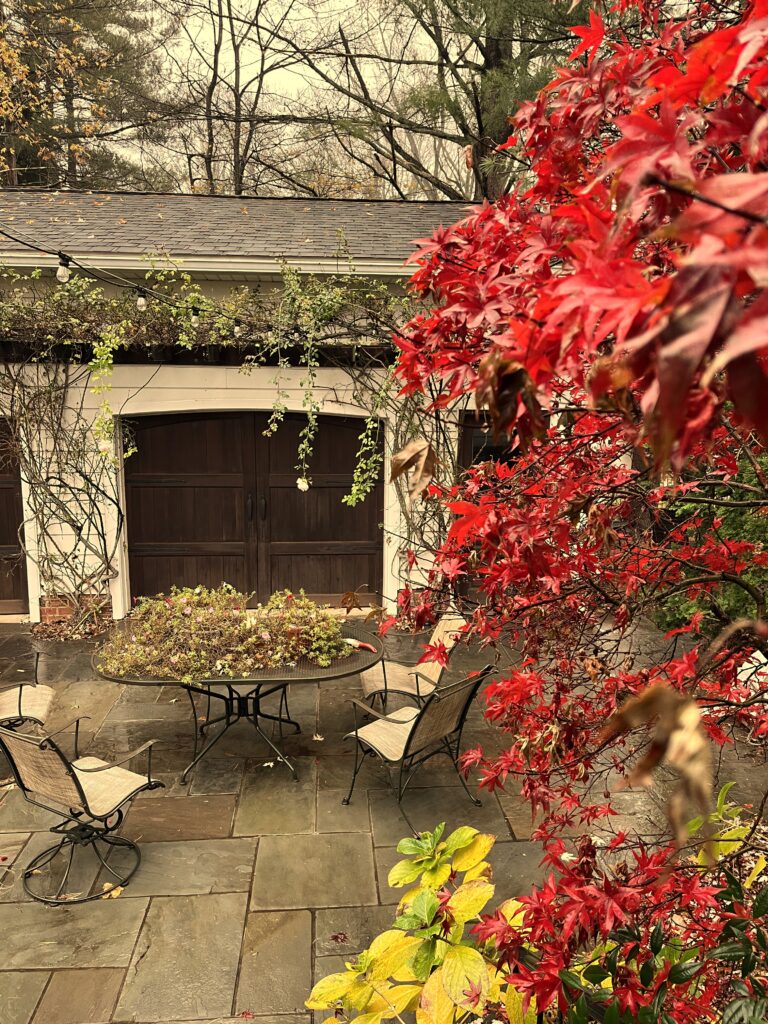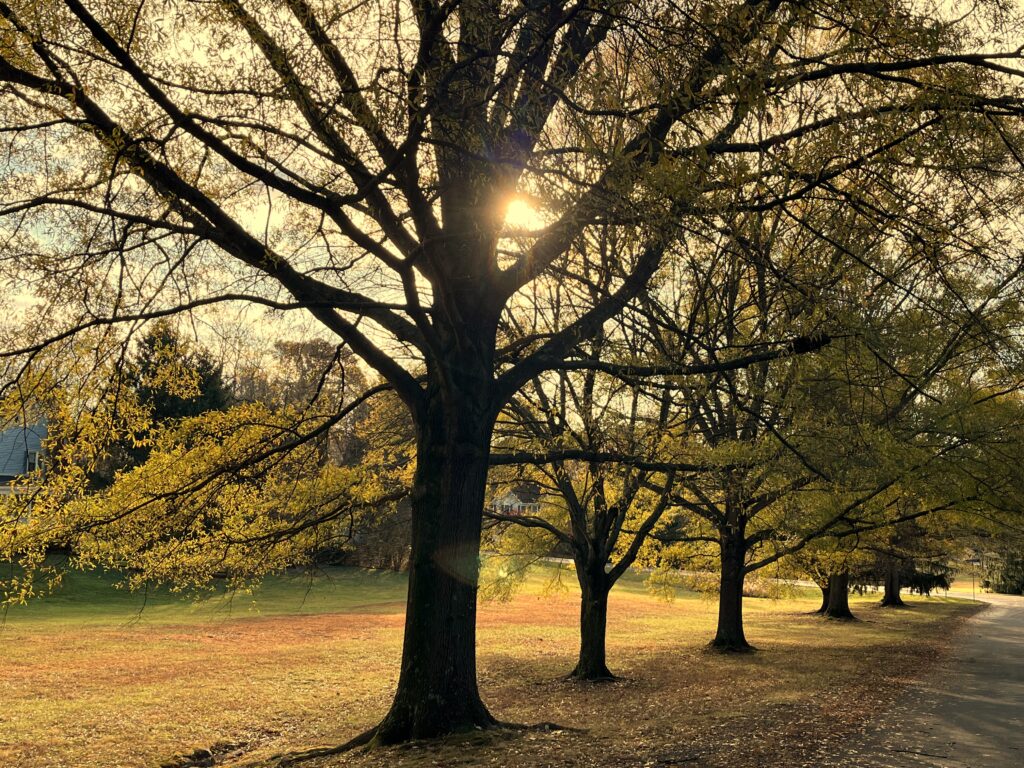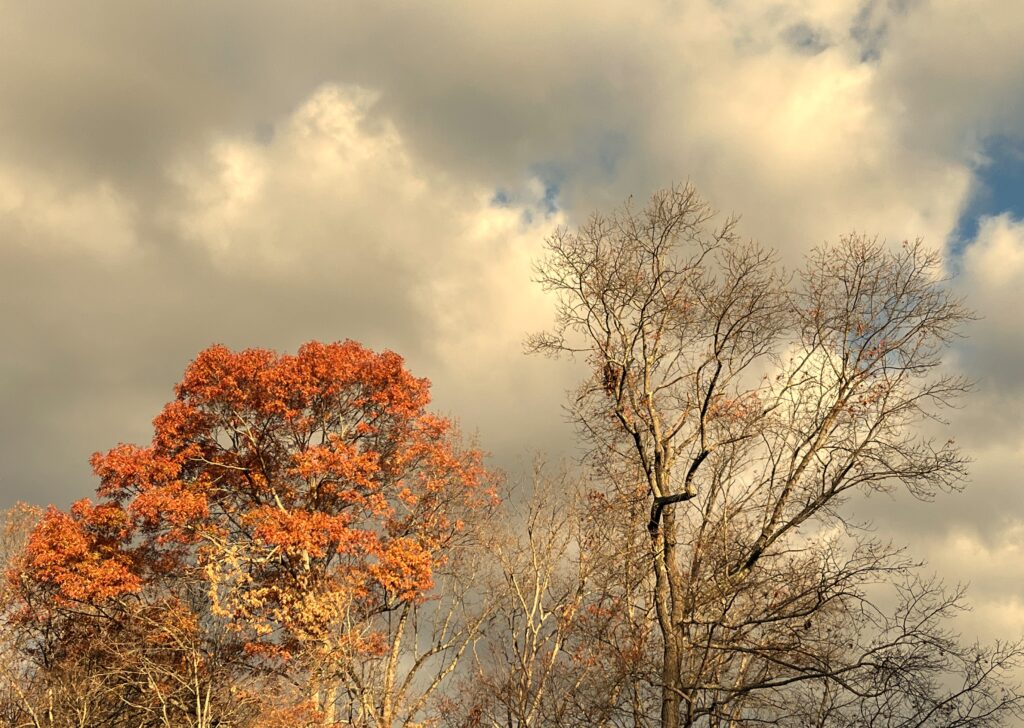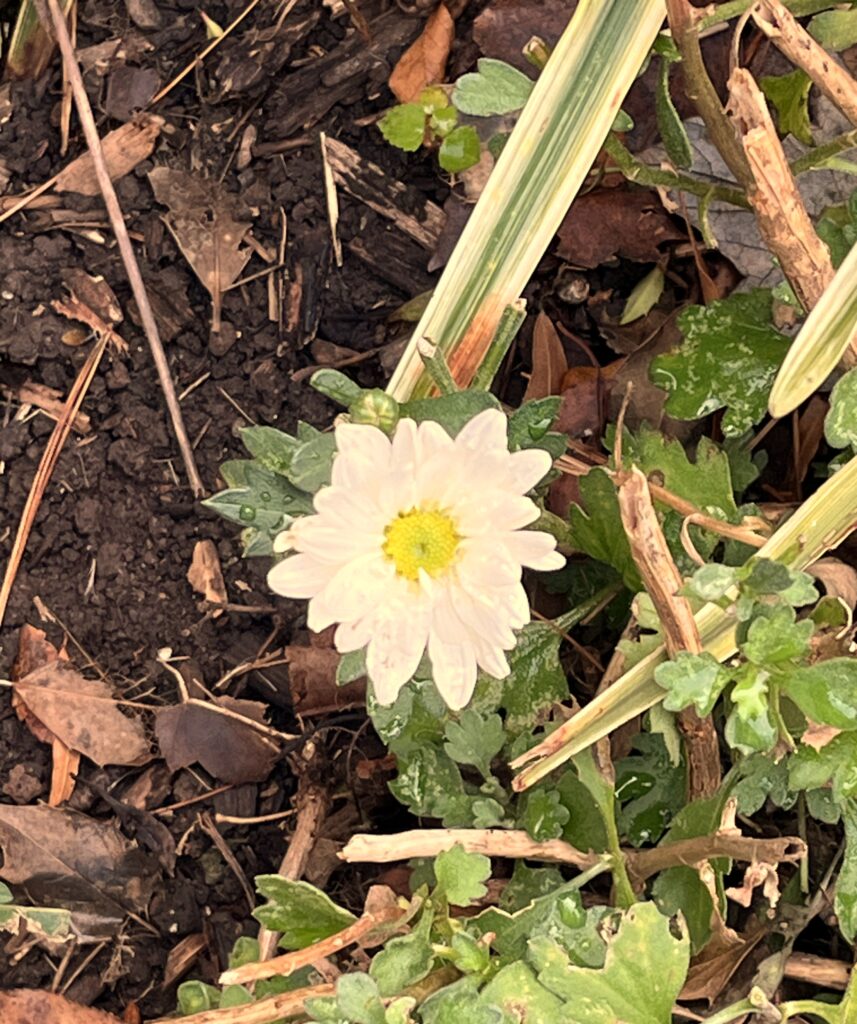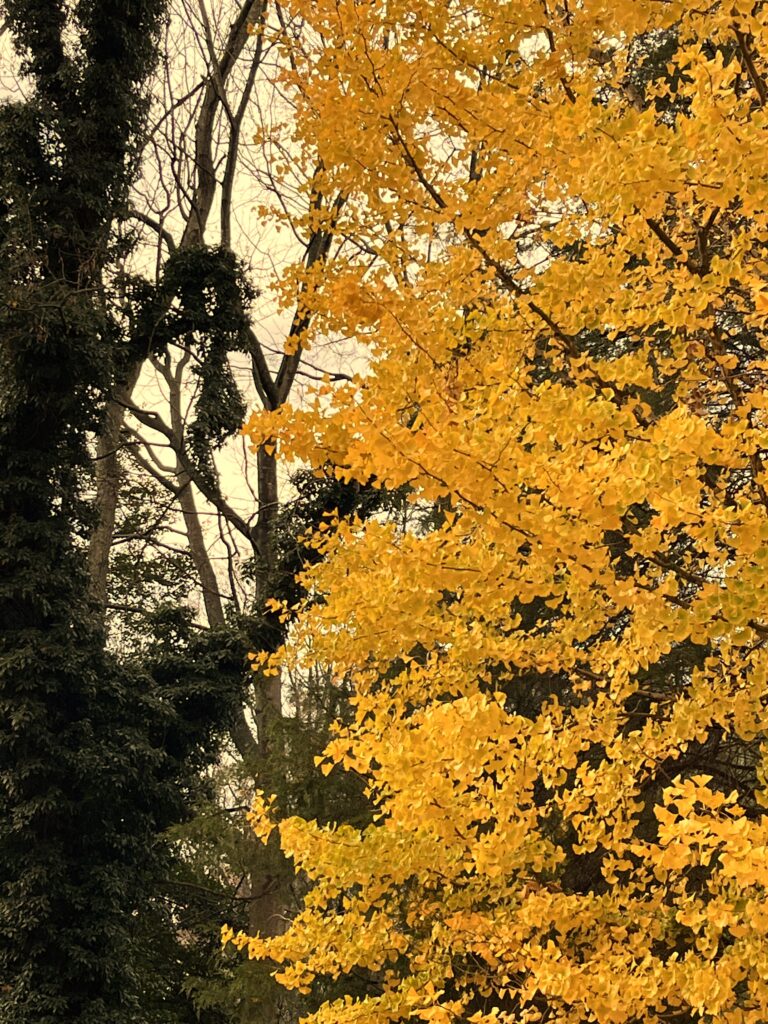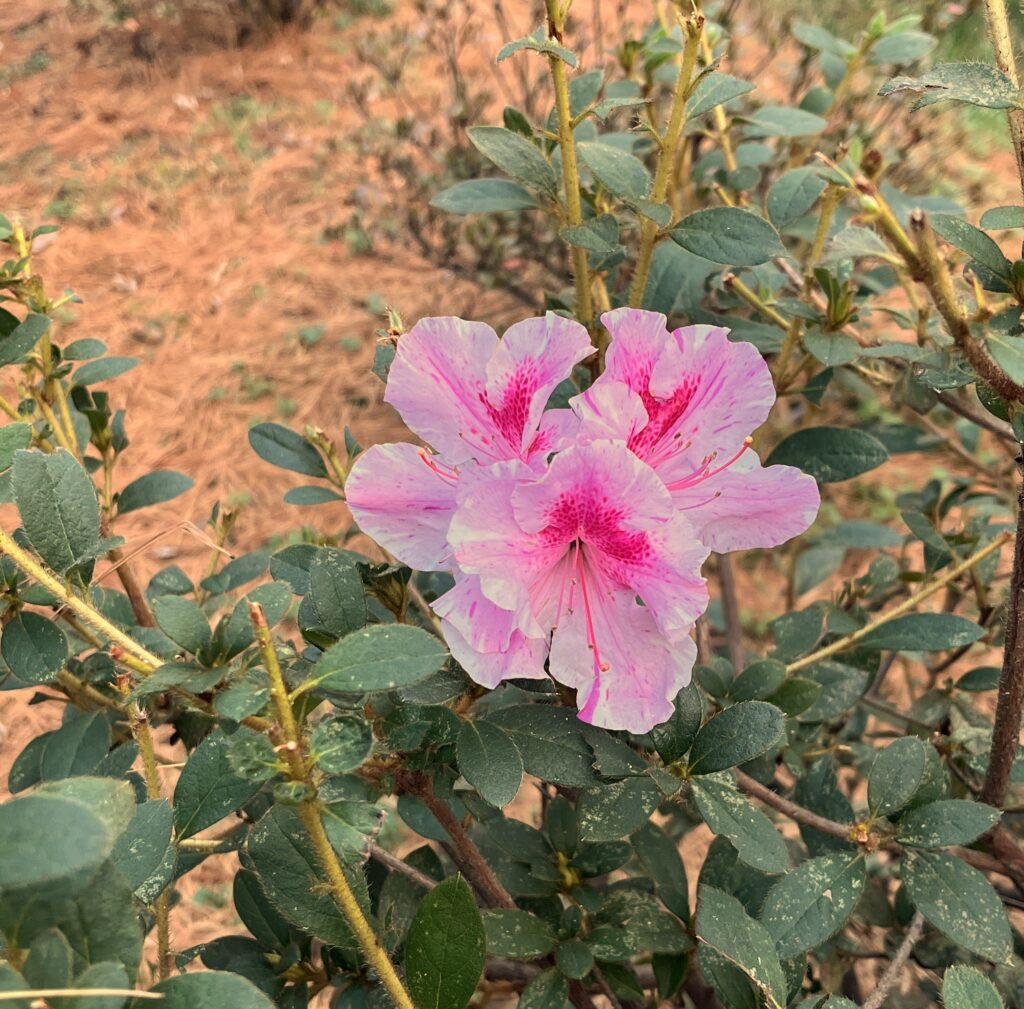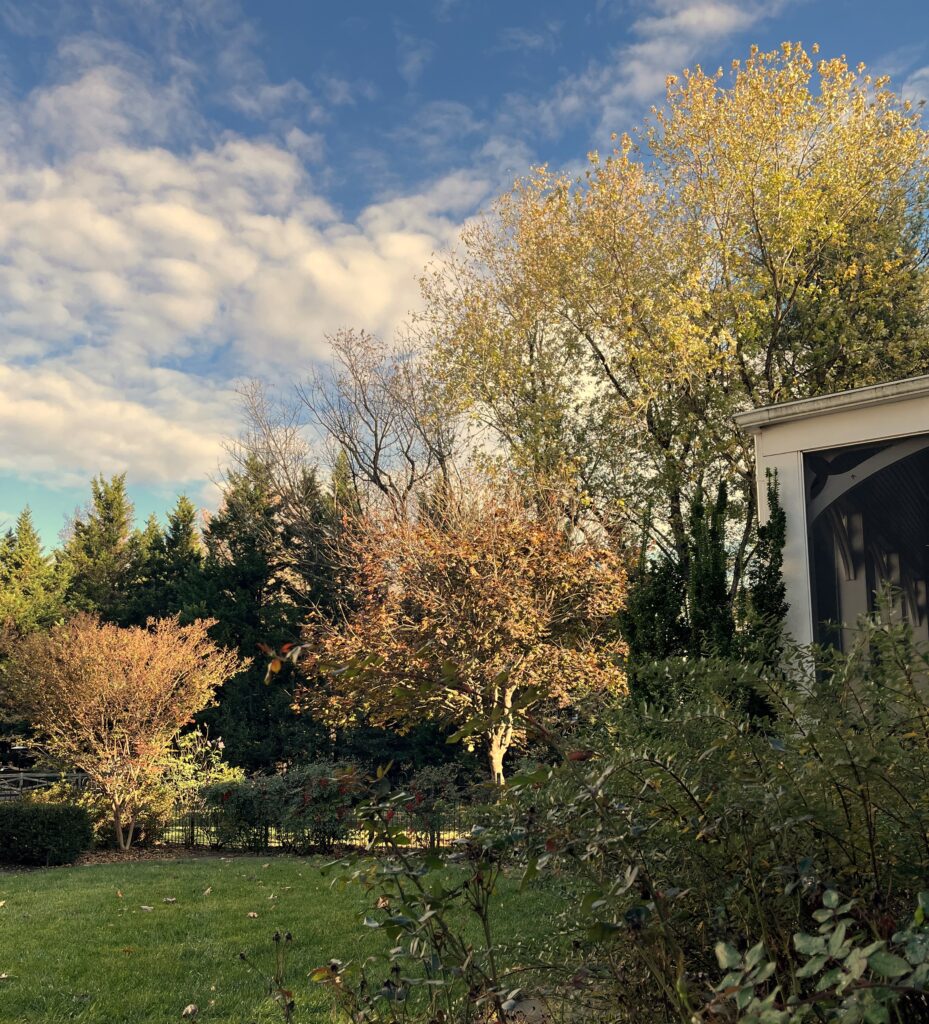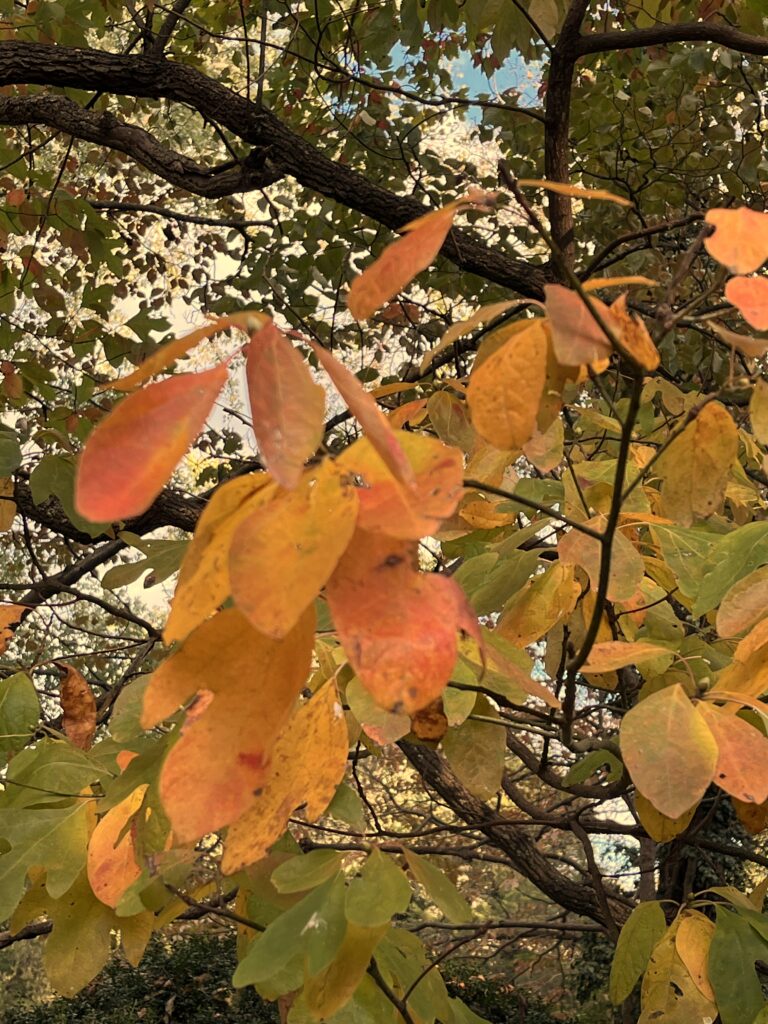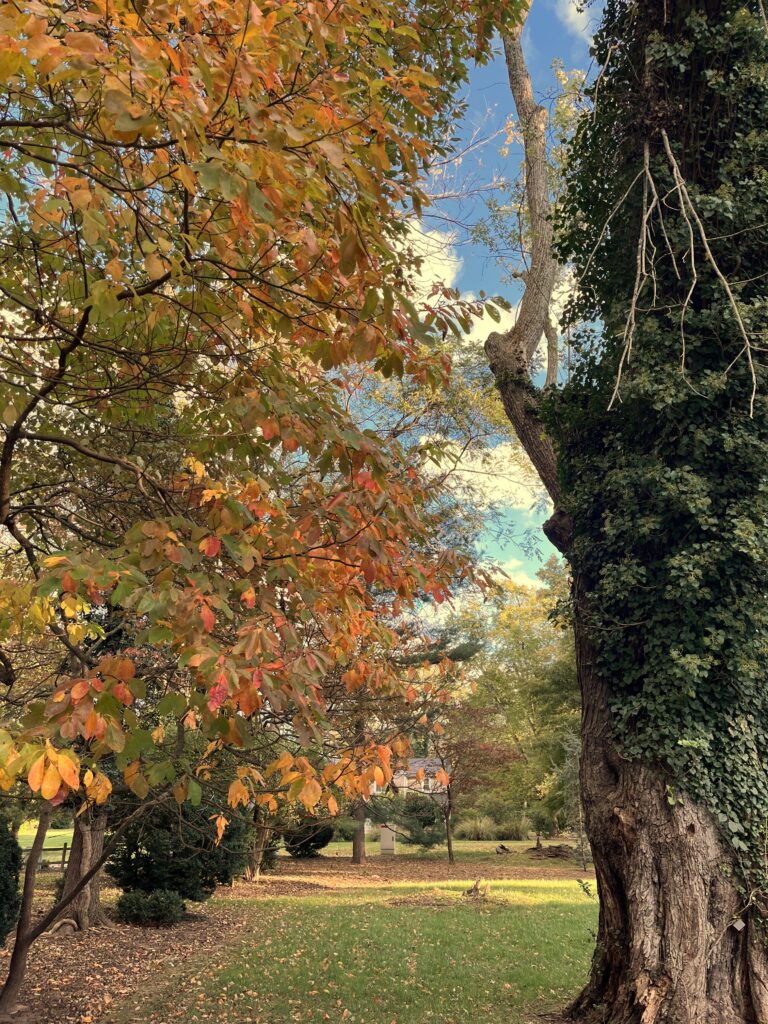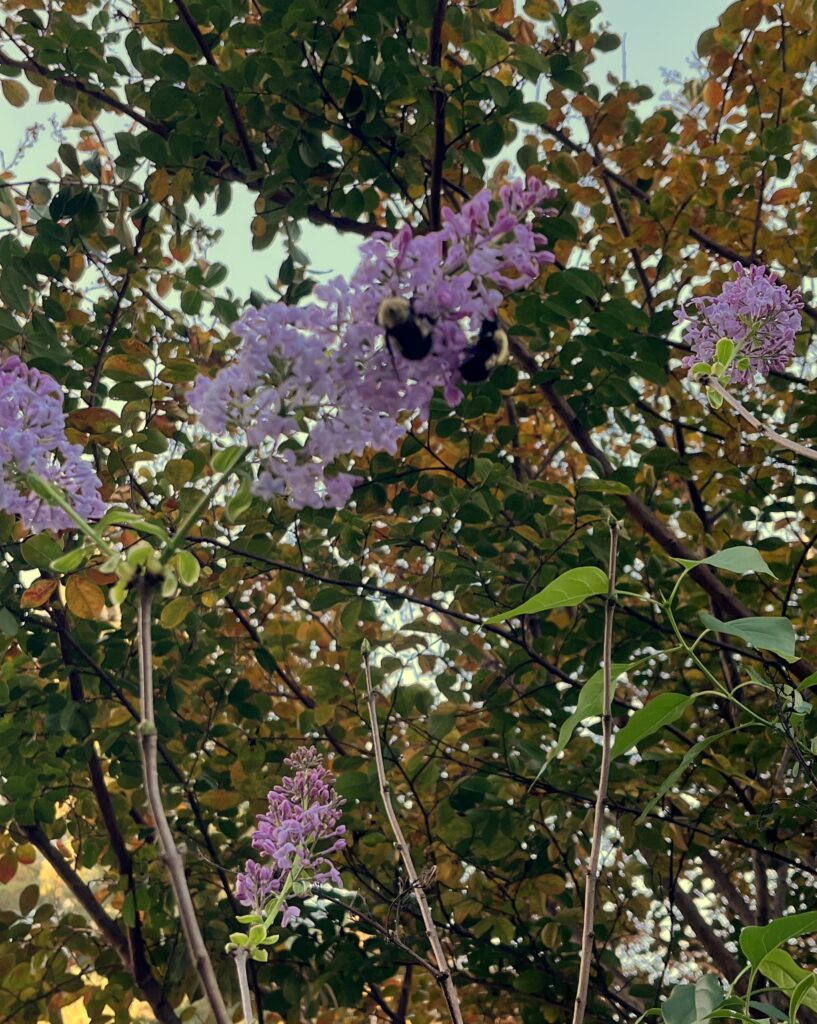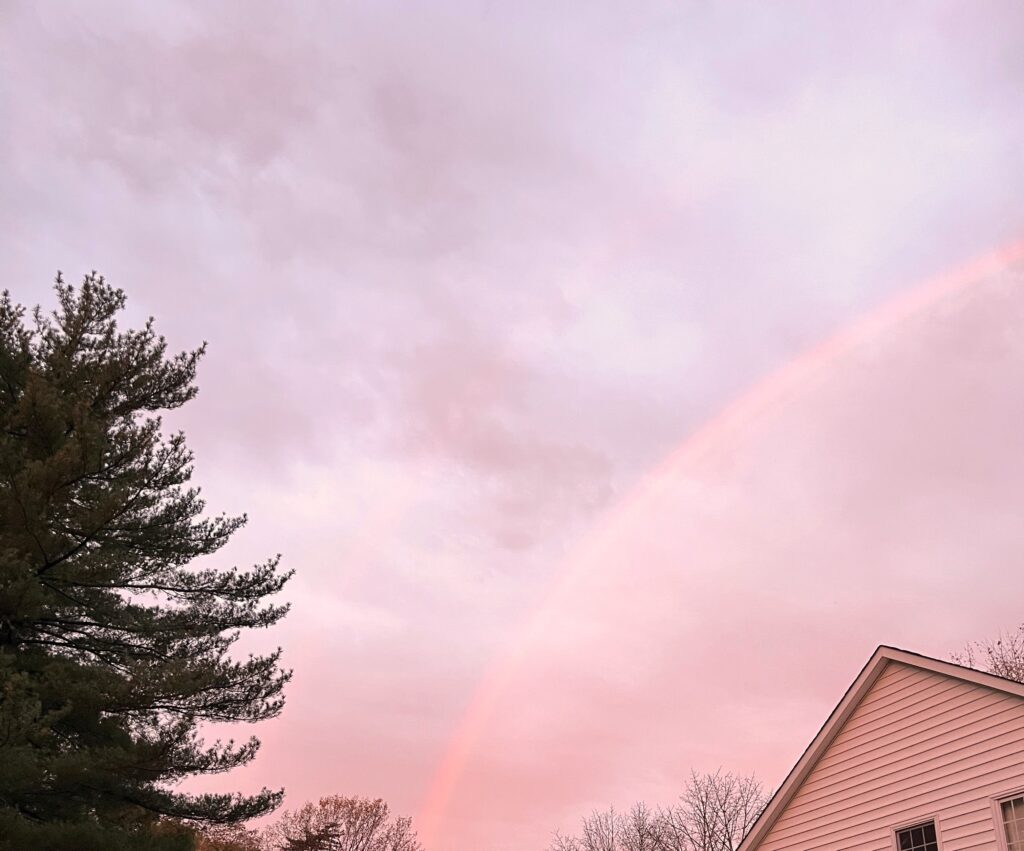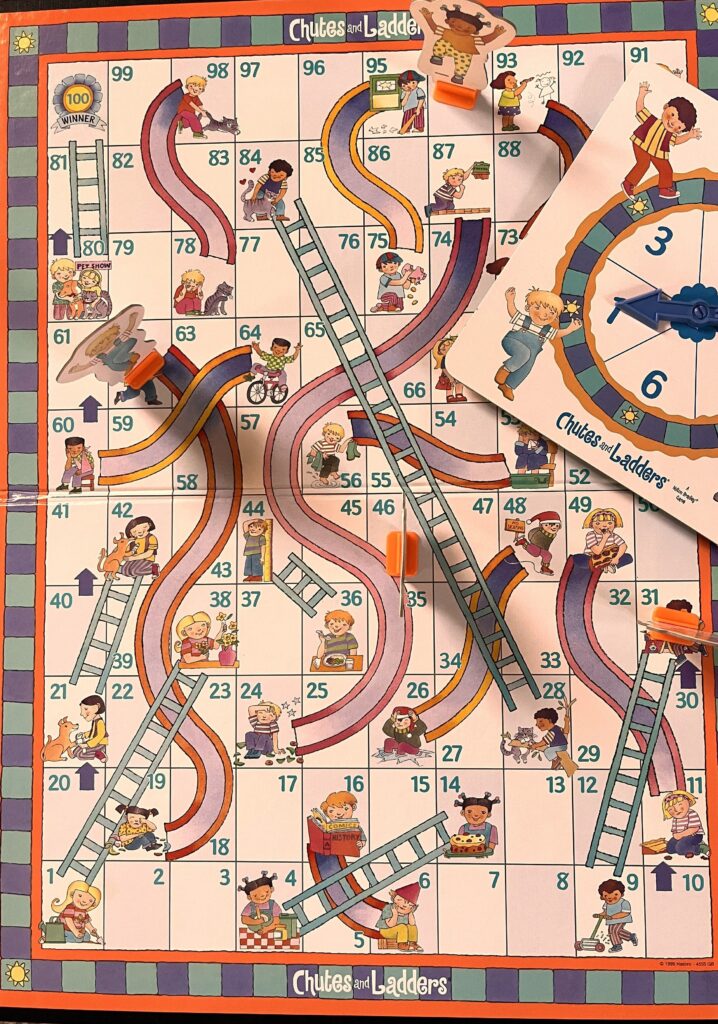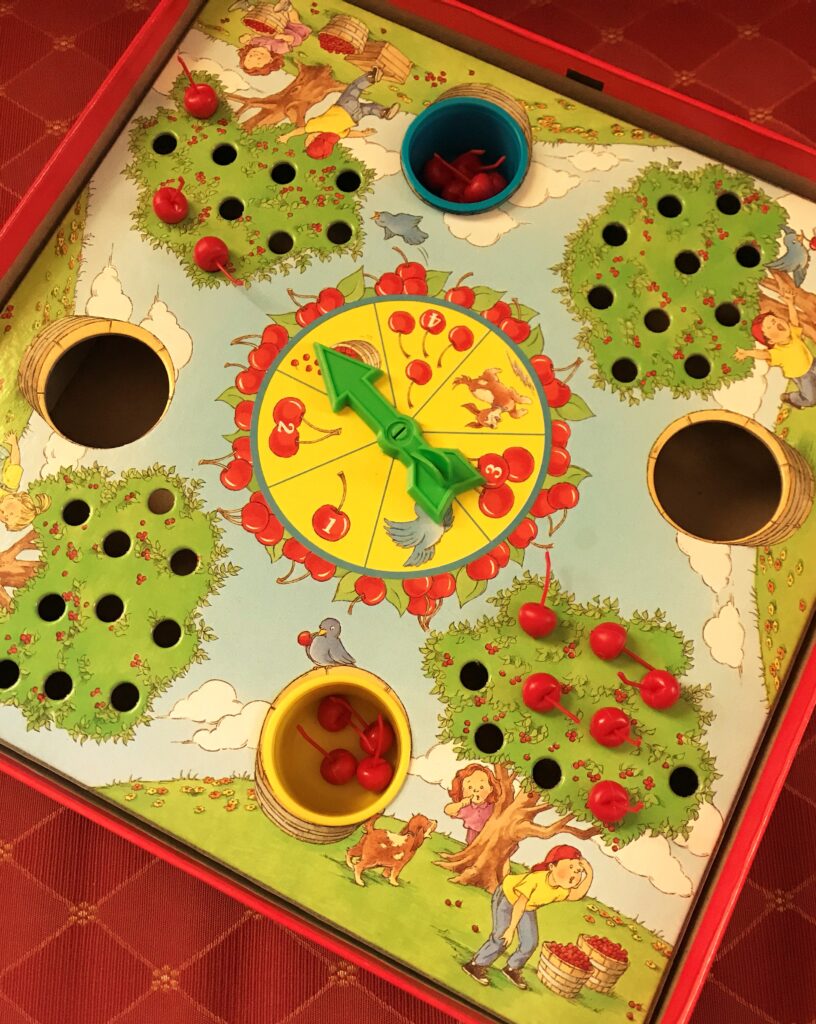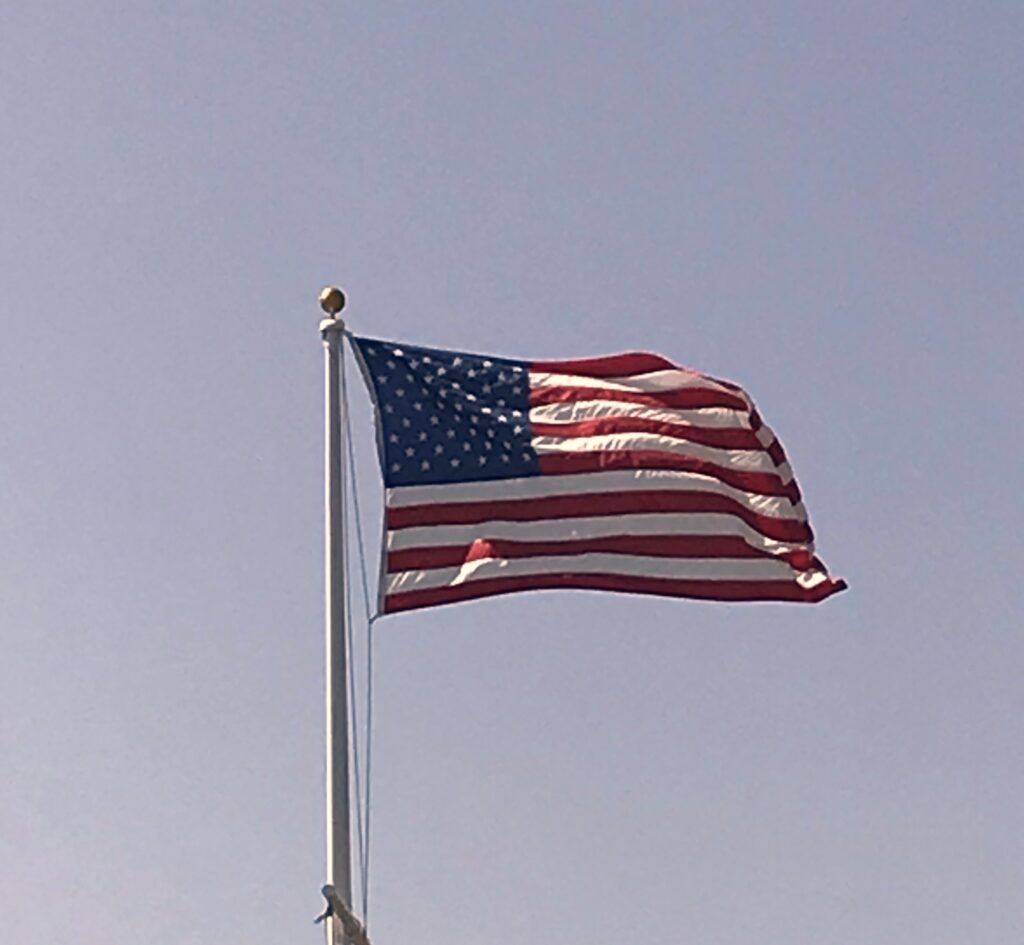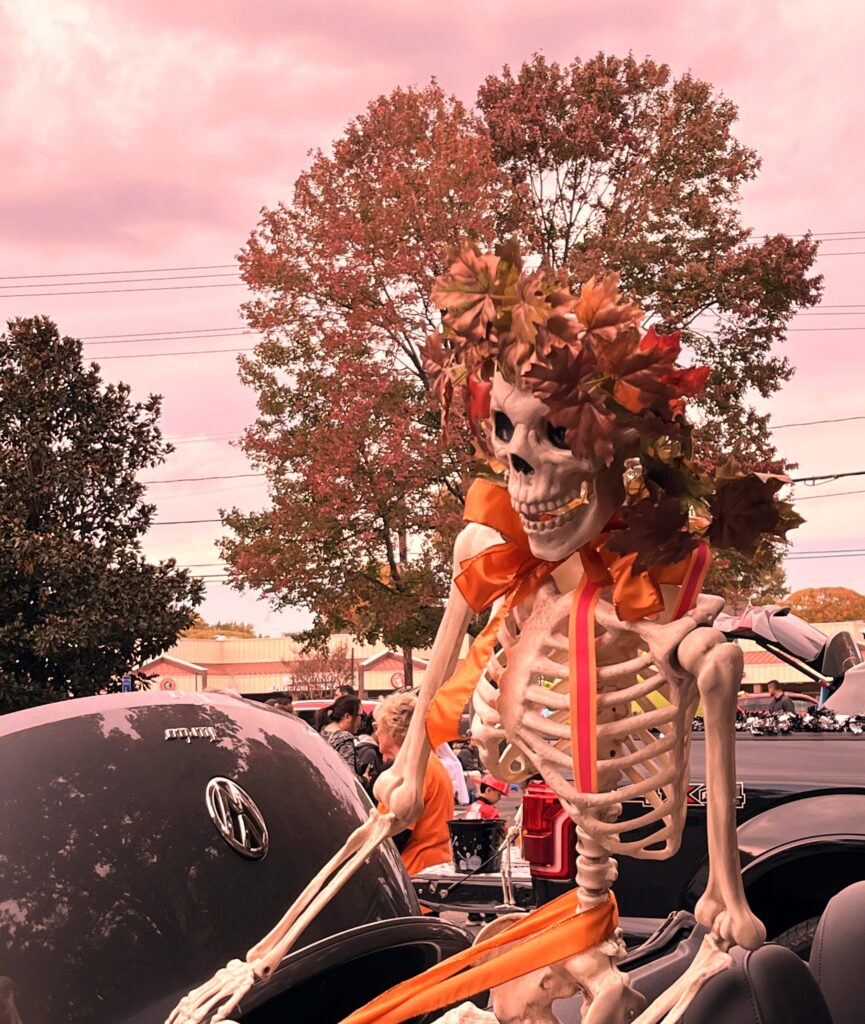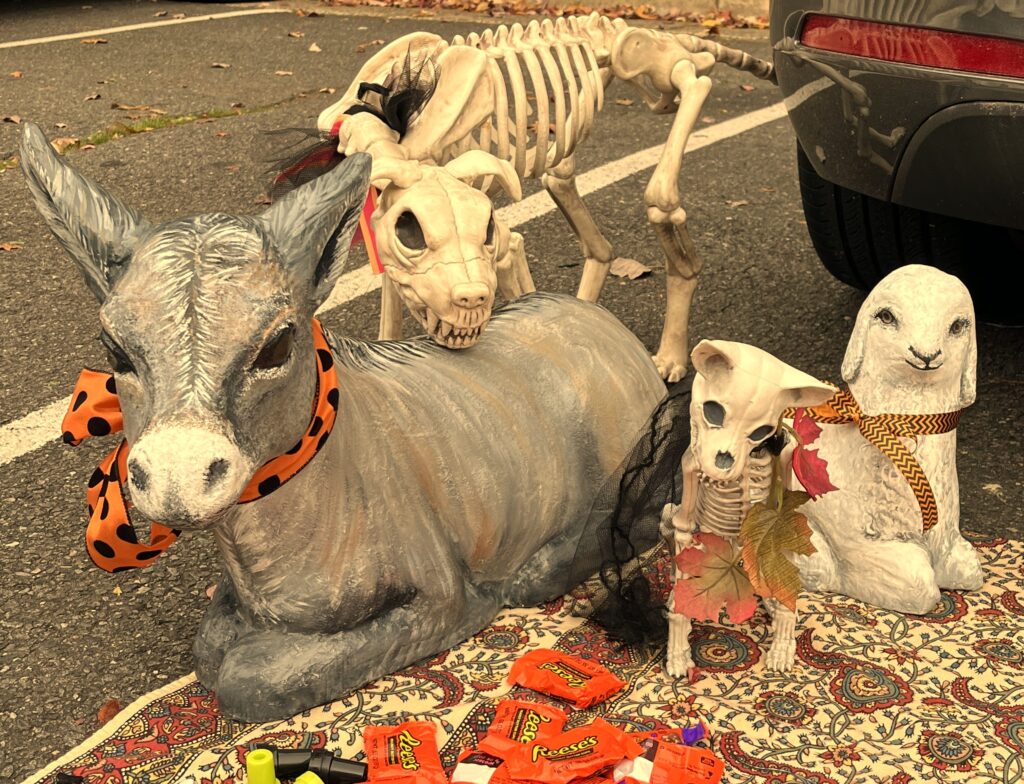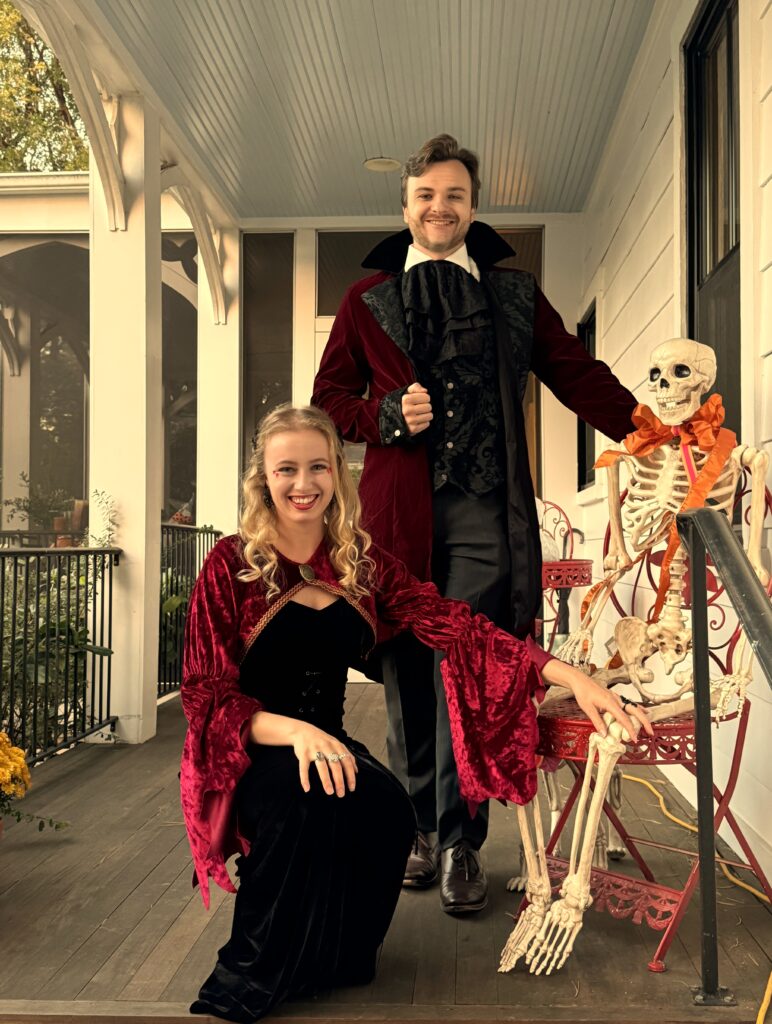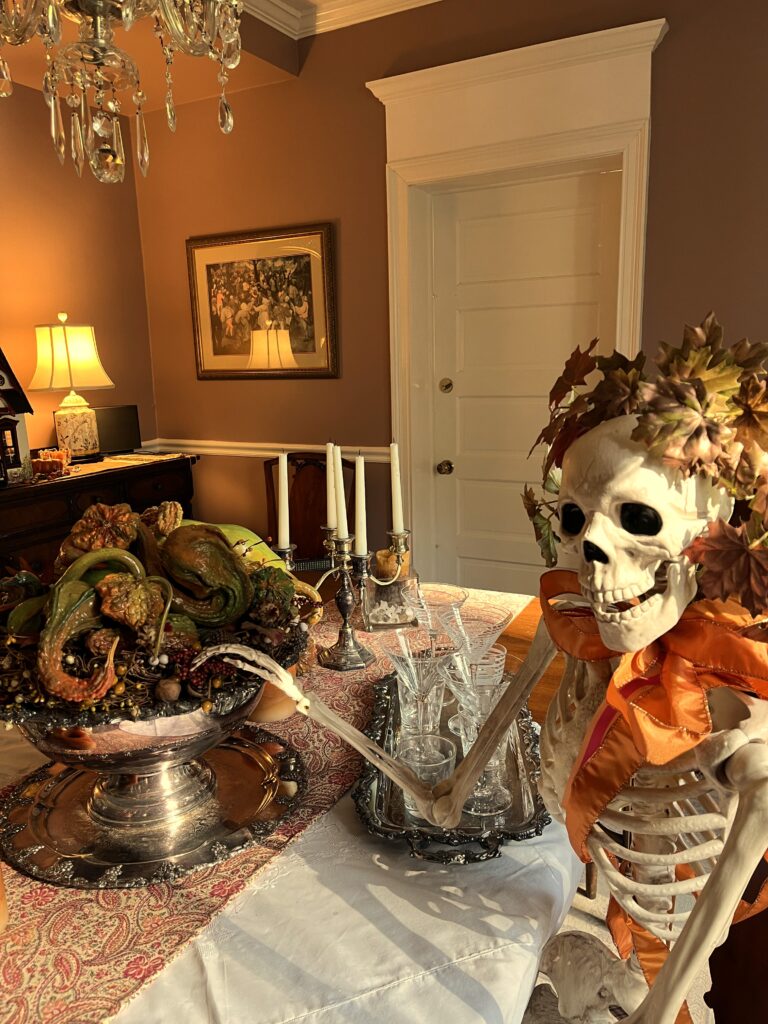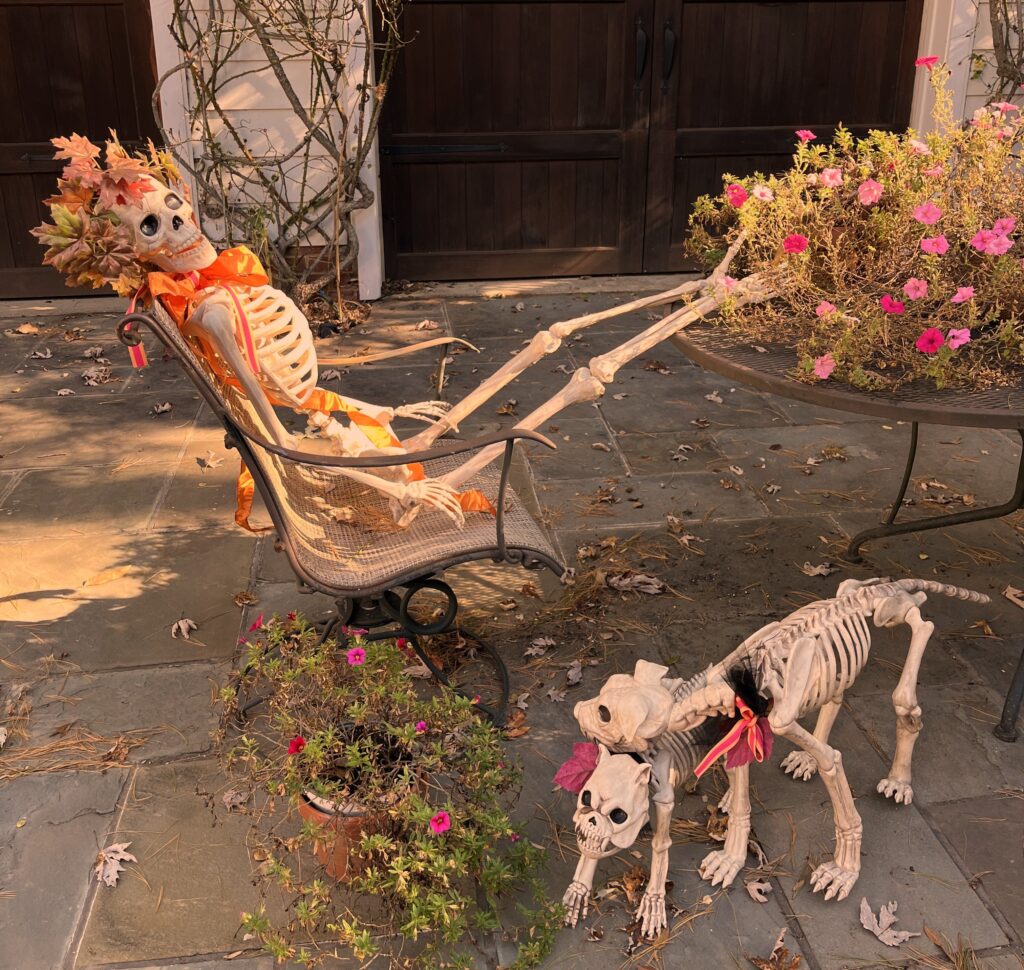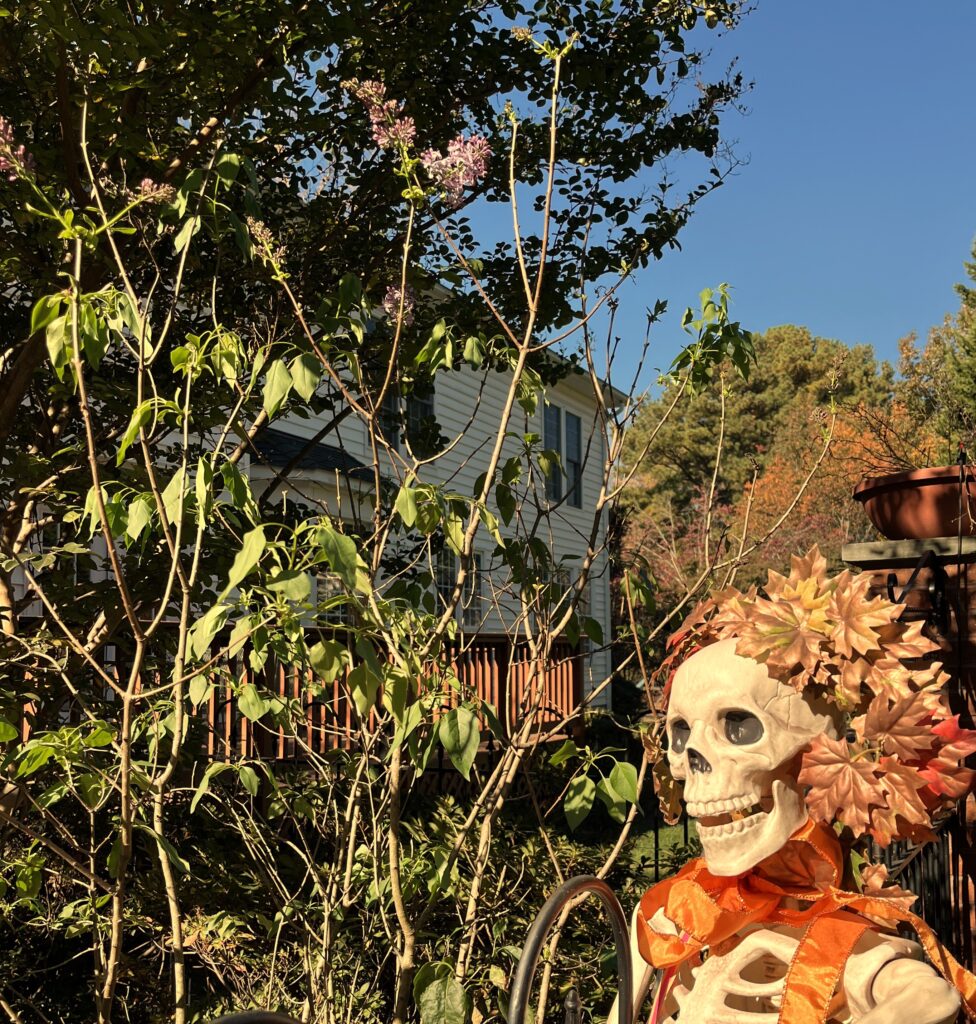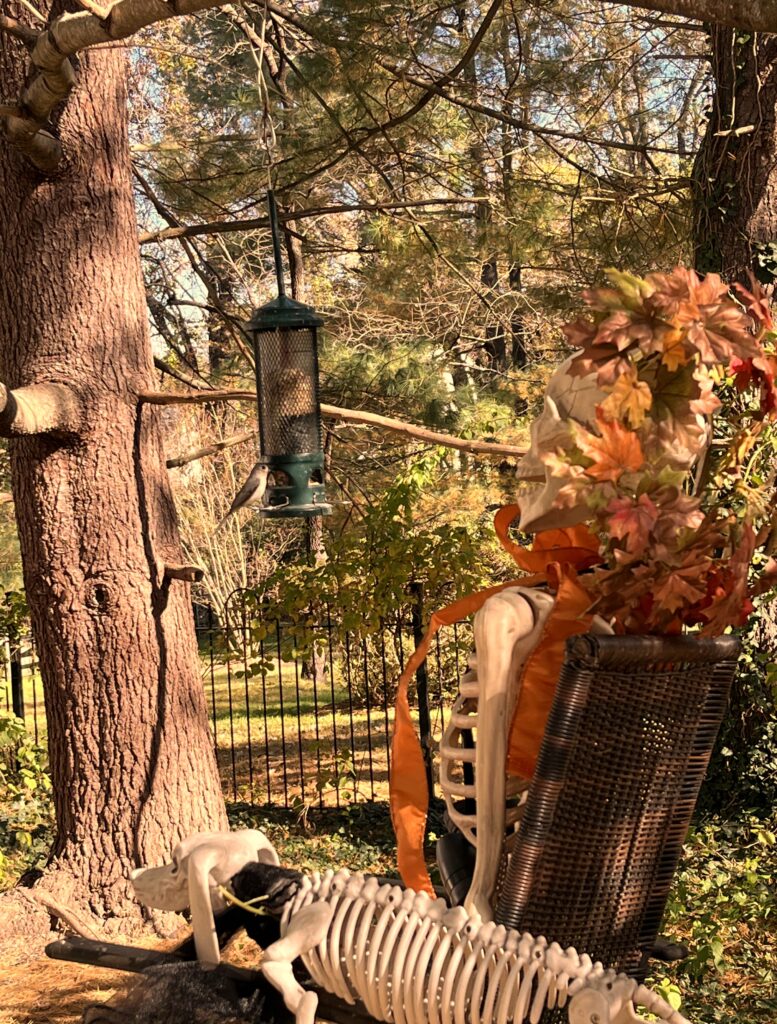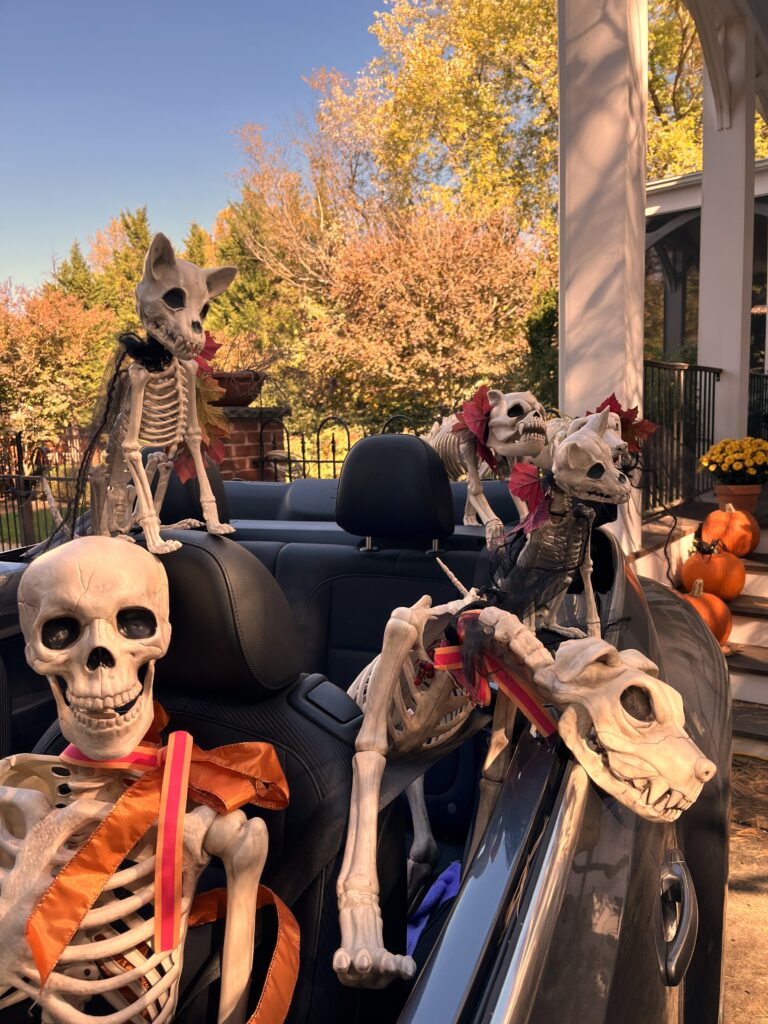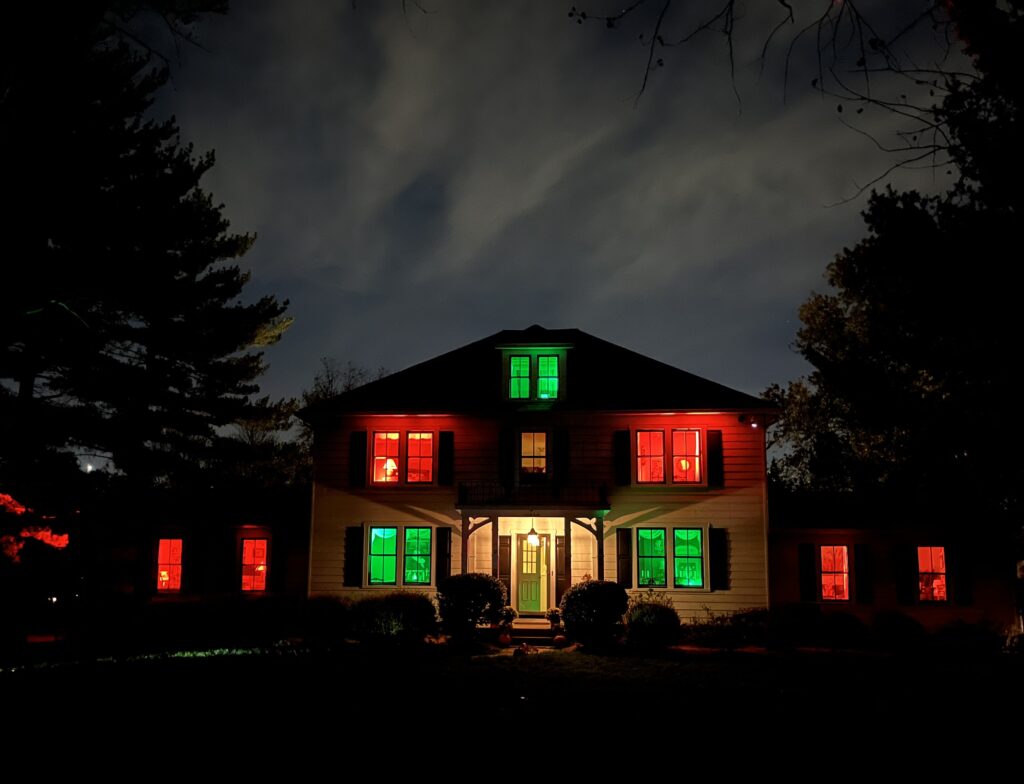Our daughter called on Monday evening to inform us of a quickly approaching astronomical event: the lunar occultation of Mars. As an aerospace engineer who minored in astronomy, she’s up on all that sort of stuff. I think she was somewhat surprised when I knew exactly what she was talking about. In preparation for my recent post on shadows cast by the nearly full February Wolf moon, I’d read that the moon would occult, or hide, Mars briefly on the night of January 13. To us Earthlings, Mars appears particularly big and bright now. It’s nearing the point in its orbit at which it’s closest to Earth. The side we’re seeing is fully lit by the sun, so the planet appears especially red. Those of us in the continental United States and parts of Africa had the chance Monday, under clear skies, to watch Mars, looking like a glowing red dot, move closer and closer to the moon until it disappeared behind it. After a while, it appeared again on the other side.
Thanks to our daughter’s reminder, around 8:45 I began stepping outside at regular intervals to observe the celestial show. Fortunately, it was another beautifully clear night. Through my bird-watching binoculars, I could distinctly see the tiny red jewel of Mars as it sidled up to the bright white globe of the moon. After a bit, it disappeared behind the moon. About a half hour afterwards, Mars emerged on the opposite side of the moon.
I would have missed the evening’s distant, silent spectacle, had my daughter not called. It made me consider, with wonder, what unseen curiosities and marvels, large and small, may be regularly unfolding around me. Often, they’re essentially invisible, as I’m lost in my head, preoccupied. Sometimes it’s with a cumbersome, amorphous anxiety. Or with small worries that tend to loom ever larger the more I dwell on them.
Every once in a while, I happen to glance outside at exactly the right moment to see a bird that’s not among the crowd of regulars around our feeders: a brown creeper hopping with zesty deliberateness up the pine, a golden-crowned kinglet flitting lightly among the leaves of the Japanese maple, a hermit thrush absolutely motionless on the bird bath. And the next moment, the bird is gone. What others come and go, without my ever knowing?
What mysteries are taking place in the skies above, and in the ground below? When this human-made world is too much with me, when people disappoint (just as I have been known to let down those who care about me), when institutions founder, when things prove faulty, when I’m close to feeling overwhelmed, I can remember to do this: Look out. Look up. Or down. Direct my attention to the everyday glories transpiring all around me. Change my perspective.
Right now, outside my window, the shadows are blue on the white snow. Two Carolina wrens are hanging upside down from the suet feeder, pecking mightily. A squirrel, the one with the fluffy ear tufts, perches atop a chair, looking thoughtful, its little hands clasped together. When evening comes, I can watch the now waning moon as it rises above the trees. I can remember to look for Mars, and for the bright stars of Orion. I likely won’t see another lunar occultation for a while. But I may witness something that will inspire awe and take me out of myself for a precious while.

